

|
|
The Film
 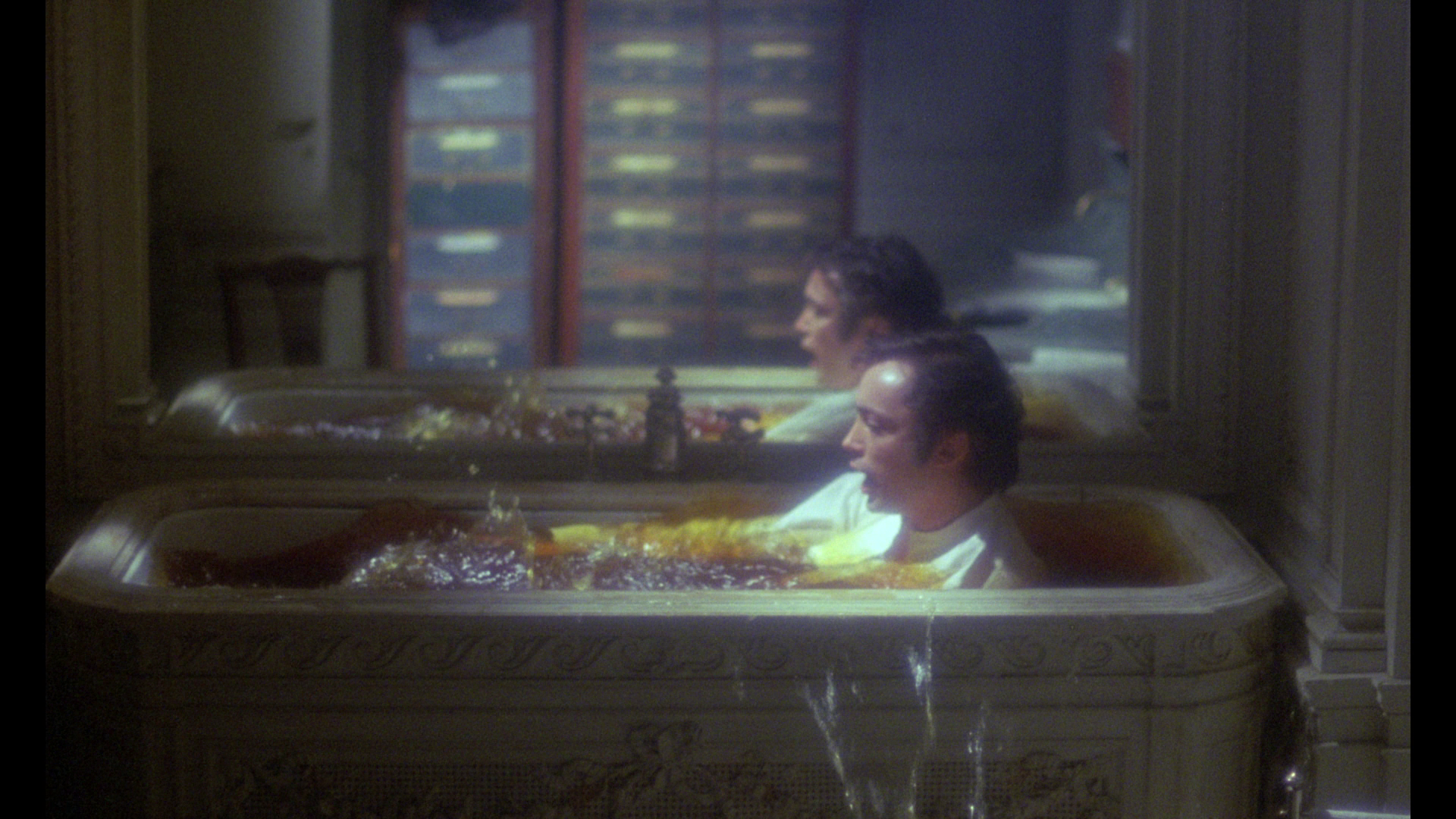 Le cas étrange de Dr Jekyll et Miss Osbourne/The Strange Case of Dr Jekyll and Miss Osbourne (Walerian Borowczyk, 1981) Le cas étrange de Dr Jekyll et Miss Osbourne/The Strange Case of Dr Jekyll and Miss Osbourne (Walerian Borowczyk, 1981)
(originally: Dr Jekyll et les femmes, though also released under a plethora of alternate titles, listed below: Docteur Jekyll et les femmes, The Strange Case of Dr Jekyll and Miss Osbourne, Borowczyk’s Dr Jekyll, Bloodbath of Dr Jekyll, Bloodlust, The Experiment and Blood of Dr Jekyll). Please also see our reviews of Arrow’s Blu-ray releases of other Borowczyk films: Théâtre de Monsieur et Madame Kabal (1967), Goto, l'île d'amour (1968), Blanche (1972), Contes Immoraux (1974), and La Bęte (1975). Robert Louis Stevenson’s now classic 1885 novella The Strange Case of Dr Jekyll and Mr Hyde, described by its author as a ‘fine bogey tale’, was first adapted for the stage less than two years after its original publication (Stevenson, quoted in Mighall, 2002: x). Since then, the novella has been adapted numerous times for both stage and screen. These adaptations have often been used as showcases for the performances of actors cast in the dual role of Dr Jekyll and Mr Hyde, such as John Barrymore and Fredric March. In an introduction to the novella published by Penguin, Robert Mighall has asserted that Stevenson’s text is ‘more known about than actually known’, and is a ‘more complex, rewarding and disturbing story than the version that has been handed down in popular cultural form’ through the various film adaptations (ibid.: ix). Stevenson intended to produce ‘a sensational tale of supernatural incident’ that was all the more disturbing for the way in which it dispensed with ‘the remote geographical setting of the conventional Gothic tale’, its narrative taking place in modern-day London (ibid.: x). It’s easy to forget that the original readers of Stevenson’s tale would not have been aware of Jekyll’s transformation into Hyde until the ninth chapter of the story, ‘Dr Lanyon’s Narrative’, in which Dr Lanyon provides a first-hand account of the transformation itself. 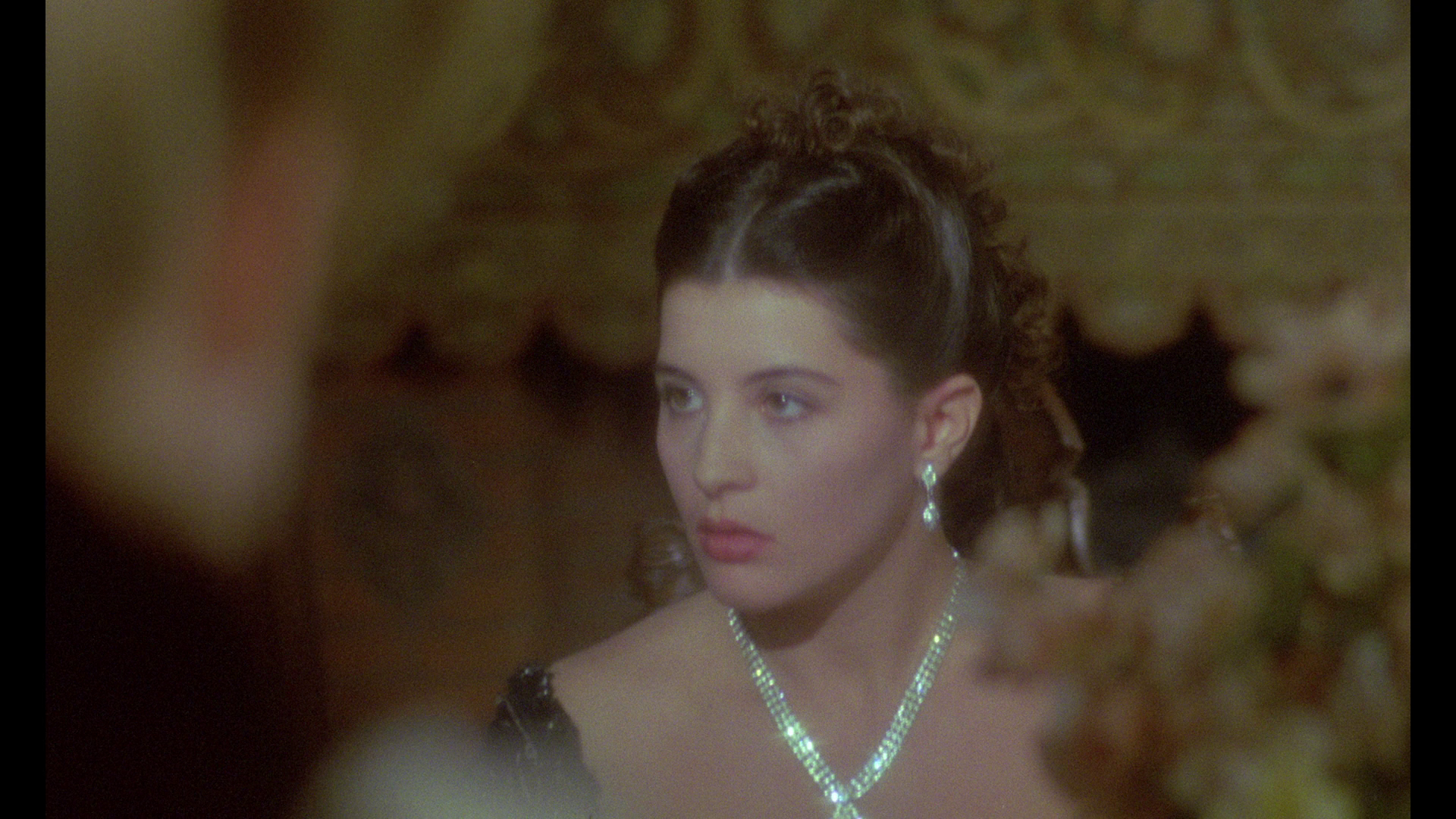 Walerian Borowczyk’s 1981 adaptation of the story, originally titled Docteur Jekyll et les femmes by its French producers (but released here under an English translation of Borowczyk’s ‘intended’ title, Le cas étrange de Dr Jekyll et Miss Osbourne/The Strange Case of Dr Jekyll and Miss Osbourne), broke with many of the conventions established by earlier cinematic versions of Stevenson’s ‘shilling shocker’ (notably by having two different actors play Henry Jekyll and Edward Hyde) and claimed to be closer in spirit to the source text than most of its predecessors – returning to the narrative its reputation as a ‘complex, rewarding and disturbing story’. David Thomson refers to the film as ‘Borowczyk’s last great film’, an ‘unashamedly messy […] passionate, delirious farce’ (Thomson, 1992: 167). It is a film that, Thomson says, ‘slashes through the false respectability of Victorian society’ (ibid.) – much as, it could be argued, Stevenson’s novella did upon its original publication. Walerian Borowczyk’s 1981 adaptation of the story, originally titled Docteur Jekyll et les femmes by its French producers (but released here under an English translation of Borowczyk’s ‘intended’ title, Le cas étrange de Dr Jekyll et Miss Osbourne/The Strange Case of Dr Jekyll and Miss Osbourne), broke with many of the conventions established by earlier cinematic versions of Stevenson’s ‘shilling shocker’ (notably by having two different actors play Henry Jekyll and Edward Hyde) and claimed to be closer in spirit to the source text than most of its predecessors – returning to the narrative its reputation as a ‘complex, rewarding and disturbing story’. David Thomson refers to the film as ‘Borowczyk’s last great film’, an ‘unashamedly messy […] passionate, delirious farce’ (Thomson, 1992: 167). It is a film that, Thomson says, ‘slashes through the false respectability of Victorian society’ (ibid.) – much as, it could be argued, Stevenson’s novella did upon its original publication.
Borowczyk’s film begins with a haunting sequence depicting Edward Hyde’s assault upon an eight year old girl, who Hyde pursues through the night-time streets before beating her almost to death with a cane. Shortly after, Fanny Osbourne (Marina Pierro) and her mother arrive at the home of Henry Jekyll (Udo Kier) in advance of a party celebrating the engagement of Fanny and Henry, Mrs Osbourne presenting Henry and his mother with a Vermeer painting which is to act as Fanny’s dowry. The other guests arrive in dribs and drabs: General William Danvers Carew (Patrick Magee) and his daughter Charlotte, Dr Lanyon (Howard Vernon), Reverend Donald Regan (Clément Harari), chemist Mr Maw, young dancer Victoria, and publisher Mr Enfield.  During dinner, the guests discuss Jekyll’s work, with Jekyll expounding on his belief in ‘transcendental medicine’ and foregrounding the importance of free will (‘According to Kant, we are free individuals, independent from phenomena’, he declares at the start of the sequence). The discussion focuses on the theme of progress (‘We are no longer in the Middle Ages’, Dr Lanyon says, ‘After us science is neither aprioric nor aprioristic’), and a conflict develops between Lanyon and Jekyll over Jekyll’s belief in transcendental medicine: ‘Transcendental medicine and chemistry aren’t mutually exclusive’, Jekyll tells his guests, ‘Chemistry doesn’t contain our bodies. It helps our bodies to reach a state where they can achieve grace’. However, this outwardly civilised discussion is punctuated by apparently non-diegetic cutaways to scenes of brutal violence (Fanny stabbing her mother to death brutally, a human corpse being hung up in Jekyll’s laboratory like a side of beef) which are later revealed to be moments of prolepsis (or visual prophecy). These cutaways express the boredom of the guests but also allude to how fallacious ‘civilised’ behaviour is: a theme of violence (both physical and verbal) runs throughout the debate at the table. The womenfolk are excluded from this conversation: despite the heated nature of the debate, when Fanny leaps to the defence of Jekyll, as he is accused of producing work that is simply derivative of others (Jekyll’s laboratory, she asserts, is ‘Dark, full of smoke and noxious vapours. You don’t act like that if you’re not convinced by a superior idea. Dr Jekyll is not a thief!’), she is told by Jekyll not to ‘take a serious business discussion for a petty feud’. During dinner, the guests discuss Jekyll’s work, with Jekyll expounding on his belief in ‘transcendental medicine’ and foregrounding the importance of free will (‘According to Kant, we are free individuals, independent from phenomena’, he declares at the start of the sequence). The discussion focuses on the theme of progress (‘We are no longer in the Middle Ages’, Dr Lanyon says, ‘After us science is neither aprioric nor aprioristic’), and a conflict develops between Lanyon and Jekyll over Jekyll’s belief in transcendental medicine: ‘Transcendental medicine and chemistry aren’t mutually exclusive’, Jekyll tells his guests, ‘Chemistry doesn’t contain our bodies. It helps our bodies to reach a state where they can achieve grace’. However, this outwardly civilised discussion is punctuated by apparently non-diegetic cutaways to scenes of brutal violence (Fanny stabbing her mother to death brutally, a human corpse being hung up in Jekyll’s laboratory like a side of beef) which are later revealed to be moments of prolepsis (or visual prophecy). These cutaways express the boredom of the guests but also allude to how fallacious ‘civilised’ behaviour is: a theme of violence (both physical and verbal) runs throughout the debate at the table. The womenfolk are excluded from this conversation: despite the heated nature of the debate, when Fanny leaps to the defence of Jekyll, as he is accused of producing work that is simply derivative of others (Jekyll’s laboratory, she asserts, is ‘Dark, full of smoke and noxious vapours. You don’t act like that if you’re not convinced by a superior idea. Dr Jekyll is not a thief!’), she is told by Jekyll not to ‘take a serious business discussion for a petty feud’.
After the dinner, Jekyll reveals that he has written a will leaving, in the case of his death, his worldly belongings ‘to my friend, Mr Edward Hyde’. Jekyll claims that he trusts Hyde to act as his executor: ‘He won’t betray me’, Jekyll asserts in reference to Hyde, ‘I swear on my own body’. Shortly afterwards, General Danvers Carew shows the trophies ‘from my most recent visit to the Dark Continent’ to the other guests: a bow and arrows with poisoned heads.  A scream alerts the other guests to an assault upon the young Victoria in her room; Fanny arrives on the scene first and discovers Hyde fleeing from the scene of the crime. Hyde knocks Fanny to the floor and stomps on her savagely. The telephone lines have been cut; the night, and its savagery, have penetrated the ‘safe’ interior of this ‘civilised’ house. Investigating Victoria’s body, Dr Lanyon declares that Victoria was essentially raped to death: her vagina was ‘widened and broken by the penis of an animal with a diameter of six centimeters and 30 centimeters long’. A scream alerts the other guests to an assault upon the young Victoria in her room; Fanny arrives on the scene first and discovers Hyde fleeing from the scene of the crime. Hyde knocks Fanny to the floor and stomps on her savagely. The telephone lines have been cut; the night, and its savagery, have penetrated the ‘safe’ interior of this ‘civilised’ house. Investigating Victoria’s body, Dr Lanyon declares that Victoria was essentially raped to death: her vagina was ‘widened and broken by the penis of an animal with a diameter of six centimeters and 30 centimeters long’.
A sword-carrying Hyde prowls around the house, beheading Enfield and then subjecting Maw to a homosexual rape before running him through with the sword. (‘Another rape, by a homosexual. A completely morally depraved person’, the other guests assert when Maw’s body is discovered.) Meanwhile, suspicious of Jekyll, Fanny sneaks into his laboratory and spies upon him, watching him as he submerges himself in a bath containing a mysterious alchemical compound. (The birthing of Hyde through what seems to be alchemy recalls the creation of the monster in J Searle Dawley’s 1910 adaptation of Frankenstein, where the creature is born in a vat of chemicals and presented as a reflection of its creator.) ‘Yes, hatred’, Hyde utters as he is born again. In this new incarnation, Hyde vandalises Jekyll’s laboratory before prowling through the house once more, attacking Jekyll’s mother and forcing her to play the piano, in a parody of bourgeois civility, as he murders yet another guest. Fanny tries to defend herself with the bow and poisoned arrows brought to the house by the general, but she is unsuccessful. ‘My dream is to see you die [….] My wish is to see you dead’, Hyde tells her. In another room, Hyde encounters Charlotte, who is besotted with him. ‘You are a brave man. I love you and want to give you pleasure’, Charlotte tells Hyde, helping him as he shoots arrows into the General, who has been bound to a table. However, Hyde turns on Charlotte, shooting her with the poisoned arrows too. He then turns his attention towards Jekyll’s mother, torturing her. Hyde is interrupted by Lanyon, who holds him at gunpoint. Hyde reminds Lanyon of his Hippocratic oath and tells the doctor that Jekyll has left a message for Lanyon to give five grams of solicor, a rare compound, to Hyde. ‘Now you will be introduced to a new domain of knowledge’, Hyde asserts as he ingests the solicor and transforms into Jekyll, under the gaze of a bewildered Lanyon: ‘And now you who hold so dear the most materialistic theories, you who despised the virtues of transcendental medicine, you who mocked your superiors, watch’, Hyde says just before the transformation.  Fanny confronts Jekyll as he prepares to transform once more into Hyde. She enters into the bathtub before Jekyll can stop her. ‘There’s no coming back from there’, Jekyll tells her: the supply of solicor has been exhausted. After Fanny exits the bath, Jekyll climbs in and transforms into Hyde. Together, Hyde and the transformed Fanny vandalise the Jekyll house, defacing the Vermeer painting and what it represents, setting the building alight. Hyde leaves a phonographic recording declaring that ‘I experience hatred and fear’, and Fanny murders her mother. The couple free in a horsedrawn carriage with no driver and, in a perverse metaphor for love (two years after Joy Division’s ‘Love Will Tear Us Apart’), kiss and consume one another. Fanny confronts Jekyll as he prepares to transform once more into Hyde. She enters into the bathtub before Jekyll can stop her. ‘There’s no coming back from there’, Jekyll tells her: the supply of solicor has been exhausted. After Fanny exits the bath, Jekyll climbs in and transforms into Hyde. Together, Hyde and the transformed Fanny vandalise the Jekyll house, defacing the Vermeer painting and what it represents, setting the building alight. Hyde leaves a phonographic recording declaring that ‘I experience hatred and fear’, and Fanny murders her mother. The couple free in a horsedrawn carriage with no driver and, in a perverse metaphor for love (two years after Joy Division’s ‘Love Will Tear Us Apart’), kiss and consume one another.
In ‘Lost and Found in Translation and Adaptation: Walerian Borowczyk and Docteur Jekyll et les Femmes (1981)’ (2009), Gary Barefoot suggests that at first glance, Borowczyk’s adaptation of Stevenson’s The Strange Case of Dr Jekyll and Mr Hyde might be seen as belonging to a group of films that form ‘a longer list of “loose”, and less respectable, versions [of Stevenson’s tale] that use the names Jekyll and Hyde because they have become associated with sexual violence hiding behind a thin mask of respectability rather than on account of any particular affinity to Stevenson’s novella’ (242). However, though far from a ‘faithful’ adaptation of Stevenson’s source novella, Borowczyk’s film contains a fidelity to some of the narrative events of Stevenson’s ‘shilling shocker’, and even the names of characters from the novella, that are omitted in the majority of screen versions of the story. (The only two characters from Stevenson’s novella that aren’t featured in Borowczyk’s film are Inspector Newcomen and the footman, Bradshaw.) Borowczyk himself suggested that with his version of Stevenson’s tale, he wanted to avoid the trappings associated with previous stage and screen adaptations and return instead to ‘the spirit’ of Stevenson’s story (Borowczyk, cited in Barefoot, op cit.: 243). In a book published alongside the release of the film in France (Borowczyk: Cinéaste Onirique – Le cas étrange du Docteur Jekyll et Miss Osbourne), Borowczyk even claimed, with tongue apparently in cheek, that the script for The Strange Case of Dr Jekyll and Miss Osbourne was based on long lost story notes by Stevenson that Borowcyk claimed to have discovered during a visit to Oxford University (ibid.: 245). The 1887 stage adaptation of Stevenson’s novella, written by Thomas Russell Sullivan, introduced a romantic subplot to the narrative by drawing focus on Jekyll’s relationship with his fiancée, Agnes Carew. This romantic subplot, not present in the source text, became a feature of many later adaptations of the novella; it is foregrounded in Borowczyk’s film, which takes place during the party celebrating Henry Jekyll’s engagement to Fanny Osbourne (the name of Stevenson’s wife). As the original title (Docteur Jekyll et les femmes) might suggest, Borowczyk’s film also introduces a number of other female characters into the story, including the mothers of both Henry Jekyll and Fanny Osbourne (Barefoot, op cit.: 244).  The film’s introduction of Jekyll’s mother (and, of course, the mother of his fiancée) is one of the film’s major points of departure from Stevenson’s novella. In fact, Borowczyk’s film puts a fairly heavy focus on the relationships between parents and their children. The film of course opens with Hyde’s assault upon, and attempted rape of, a child, and later in the picture Hyde’s sexual assault upon Charlotte, witnessed by General Danvers Carew (her father), is met with reciprocation, leading the General to spank her. Much later, Charlotte effectively commits patricide by aiding Hyde in executing her father who, having been bound to a table, Hyde shoots with the poisoned arrows that the General himself ironically brought with him from his sojourn to the ‘Dark Continent’. When, in an early sequence, Fanny arrives at the Jekyll house and greets Henry in his rooms, they kiss passionately, and Borowczyk cuts away to a portrait of Henry’s father; in a moment which suggests the frustration of desire by tradition and the weight of the past, Fanny breaks her embrace with Henry, commenting on the presence of his father’s portrait. (‘He’s looking’, she says. ‘Who?’, Jekyll asks. ‘Your father’, Fanny responds.) During the dinner sequence early in the film, one of Borowczyk’s cutaways, functioning as a prolepsis, is to the scene towards the end of the film in which Fanny Osbourne, having been overcome by the same alchemy which transforms Henry Jekyll into Edward Hyde, brutally stabs her mother to death. Under the guise of Hyde, Jekyll likewise commits matricide, torturing his mother as she screams, ‘You think you are dealing with a weak woman? You’ll pay for this. The Queen will show no mercy. She knows what a son means to his mother [….] Give me my child back! Henry, help!’ The film’s introduction of Jekyll’s mother (and, of course, the mother of his fiancée) is one of the film’s major points of departure from Stevenson’s novella. In fact, Borowczyk’s film puts a fairly heavy focus on the relationships between parents and their children. The film of course opens with Hyde’s assault upon, and attempted rape of, a child, and later in the picture Hyde’s sexual assault upon Charlotte, witnessed by General Danvers Carew (her father), is met with reciprocation, leading the General to spank her. Much later, Charlotte effectively commits patricide by aiding Hyde in executing her father who, having been bound to a table, Hyde shoots with the poisoned arrows that the General himself ironically brought with him from his sojourn to the ‘Dark Continent’. When, in an early sequence, Fanny arrives at the Jekyll house and greets Henry in his rooms, they kiss passionately, and Borowczyk cuts away to a portrait of Henry’s father; in a moment which suggests the frustration of desire by tradition and the weight of the past, Fanny breaks her embrace with Henry, commenting on the presence of his father’s portrait. (‘He’s looking’, she says. ‘Who?’, Jekyll asks. ‘Your father’, Fanny responds.) During the dinner sequence early in the film, one of Borowczyk’s cutaways, functioning as a prolepsis, is to the scene towards the end of the film in which Fanny Osbourne, having been overcome by the same alchemy which transforms Henry Jekyll into Edward Hyde, brutally stabs her mother to death. Under the guise of Hyde, Jekyll likewise commits matricide, torturing his mother as she screams, ‘You think you are dealing with a weak woman? You’ll pay for this. The Queen will show no mercy. She knows what a son means to his mother [….] Give me my child back! Henry, help!’
Against this, the symbolism of the ‘dowry’ provided by Fanny’s mother, Vermeer’s ‘Woman in Blue Reading a Letter’ (referred to in the dialogue as ‘Pregnant Woman Reading a Letter’), seems hardly understated: at the end of the film, both of them having been overcome by Jekyll’s transformative alchemy and the ‘hatred’ it provokes, Edward Hyde and Fanny Osbourne destroy the house. Borowczyk shows us in close-up the defacing of the Vermeer painting as chemicals and compounds are scattered across it, and both it and the portrait of Jekyll’s father are ultimately consumed by flames. 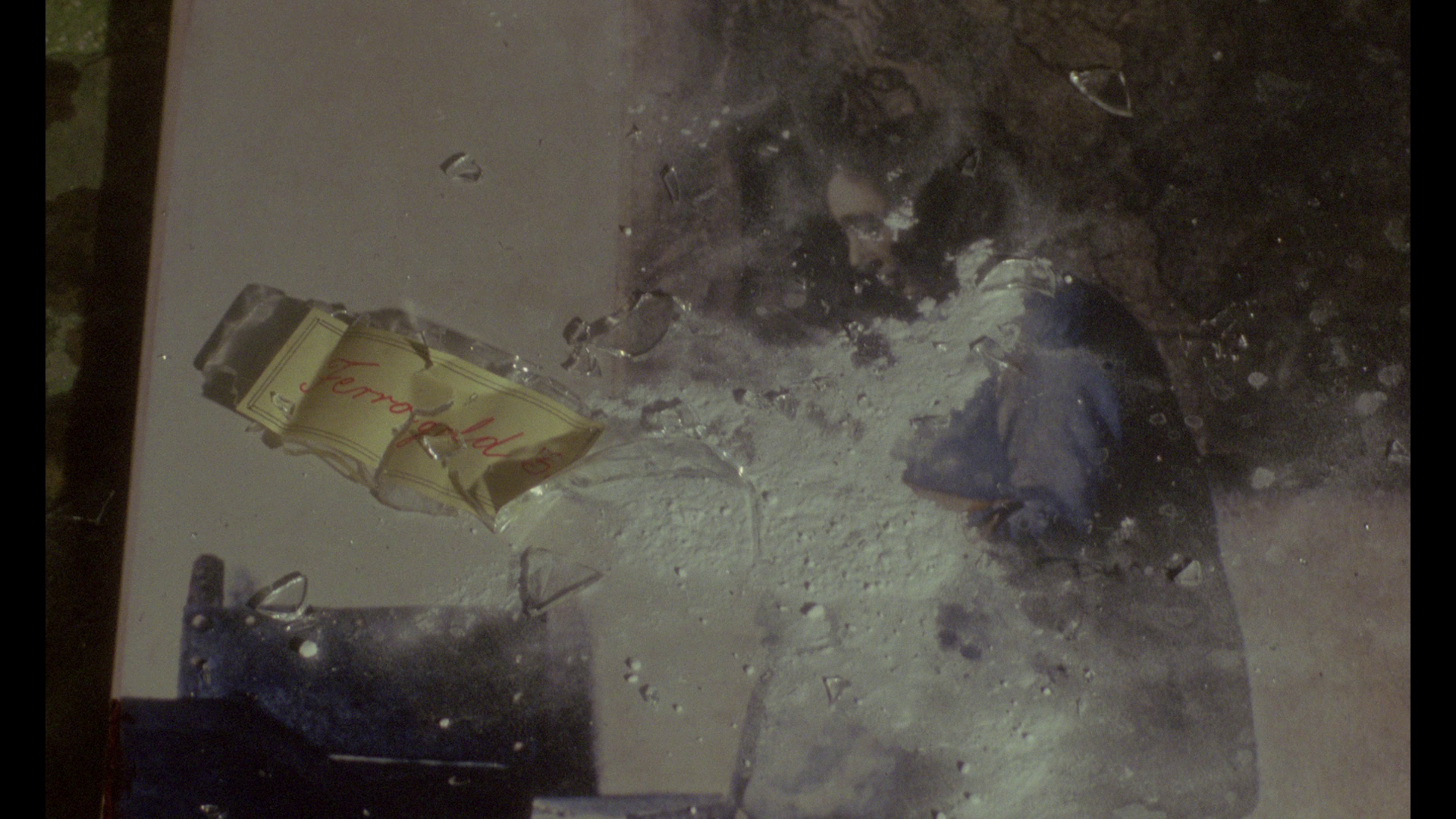 Unlike many previous adaptations of the story, which foreground the performances of the actors cast in the dual role of Jekyll and Hyde, Borowczyk’s film features two different actors as Henry Jekyll and Edward Hyde. Henry Jekyll, as played by Udo Kier, is a vain and urbane man, concerned with his appearance (indexical of his social standing and the respect or ‘credit’, to use Stevenson’s vernacular, that is associated with him); played by Gérard Zalcberg, Edward Hyde, meanwhile, is radically different from his depiction in the majority of screen versions of the tale, which interpret Hyde as bestial – often squat in stature and covered in hair. Zalcberg’s Hyde is tall and well-dressed, with shaven eyebrows and a ‘bowl cut’ that harks back to the Dark Ages, making Hyde appear for all the world like a particularly demented extra from Franklin J Schaffner’s The War Lord (1965). Unlike many previous adaptations of the story, which foreground the performances of the actors cast in the dual role of Jekyll and Hyde, Borowczyk’s film features two different actors as Henry Jekyll and Edward Hyde. Henry Jekyll, as played by Udo Kier, is a vain and urbane man, concerned with his appearance (indexical of his social standing and the respect or ‘credit’, to use Stevenson’s vernacular, that is associated with him); played by Gérard Zalcberg, Edward Hyde, meanwhile, is radically different from his depiction in the majority of screen versions of the tale, which interpret Hyde as bestial – often squat in stature and covered in hair. Zalcberg’s Hyde is tall and well-dressed, with shaven eyebrows and a ‘bowl cut’ that harks back to the Dark Ages, making Hyde appear for all the world like a particularly demented extra from Franklin J Schaffner’s The War Lord (1965).
The film begins with a quote from Stevenson’s novella: ‘I knew myself, at the first breath of this new life, to be more wicked, tenfold more wicked, sold a slave to my original evil; and the thought, in that moment, braced and delighted me like wine. I stretched out my hands, exulting in the freshness of these sensations’. The quote foregrounds Stevenson’s theme of ‘ordinary secret sinners’, a phrase used within the novella to suggest ‘something that is glimpsed repeatedly in the narrative: that the “ordinary” condition of [Jekyll’s] society is for individuals to sin in secret’ (Mighall, op cit.: xxvii). In our first encounter with Jekyll, he is recording (offscreen) a passage presumably intended for inclusion within his book (and which is itself a quote from the character of Jekyll in Stevenson’s novella): ‘Volume II, chapter 12: “Men have before hired bravos to transact their crimes, while their own person and reputation sat under shelter’. Borowczyk’s film offers an attack on the concept of ‘reputation’ (reflecting a broader attitude towards the concept of ‘reputation’ that is highlighted by the interview with Marina Pierro which is included in the ‘extras’ on this disc). General Danvers Carew is depicted as a blowhard, a professional military man who reveals himself to be an utter coward in the face of peril, backing away from Hyde like a child – even though the General is holding a revolver. After the attack upon Victoria, the guests hear a gunshot and it is revealed that the General has shot Bartholomew, the Osbournes’ coachman, ostensibly believing him to be Victoria’s assailant – though it is clear that he isn’t. Following this act of murder, which seems simply to be a product of the General’s bloodthirstiness, Danvers Carew offers a mealy-mouthed apology: ‘This is war. It’s like war. The soldiers shoot, and the Lord guides their bullets’. 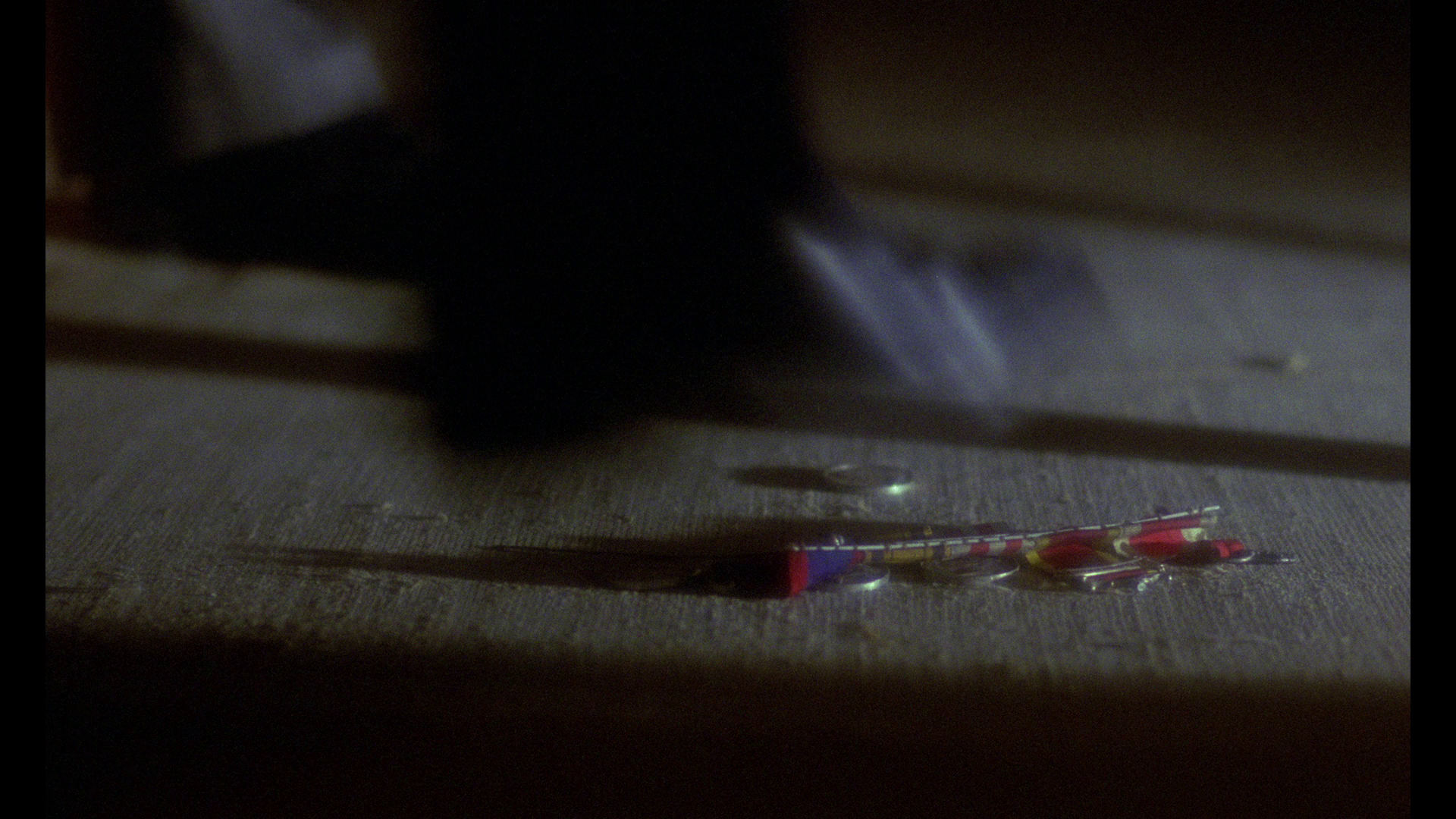 Hyde’s assaults upon the guests are presented as attacks on different professions and their symbolism for upstanding Victorian society; Hyde provokes Jekyll’s guests to the point that their civilised veneer begins to fall apart. When Hyde attacks the General, Hyde tells his victim, ‘You will see things that no-one dared to show you’. Snatching the General’s medals from his chest and throwing them to the floor, Hyde declares bitterly, ‘Step on them! Step on them! Spit on them! Crush your general’s medals! Spit on them!’ Borowczyk shows, in close-up, Hyde’s highly-polished boots stomping on the medals. ‘You travelled during your career as a highly-qualified soldier’, Hyde says, ‘but you never went this far’. This scene excites Charlotte, the General’s daughter. ‘Come! Come!’, she beckons to Hyde, leaning over a table and caressing a sewing machine before lifting her nightgown to reveal her buttocks. In close-up, Hyde fucks Charlotte with his huge (prosthetic) penis whilst the General watches on. ‘Look at your daughter, daddy!’, Charlotte taunts the General. In response to Charlotte’s taunting, after Hyde has fled, the enraged General thrashes his own daughter’s bare bottom whilst his tongue lolls from his mouth: Danvers Carew’s perversion and sadism arguably exceeds that of Hyde himself, although it is usually concealed by the respectability (or ‘credit’, to use Stevenson’s term) associated with his position as a general. Hyde’s assaults upon the guests are presented as attacks on different professions and their symbolism for upstanding Victorian society; Hyde provokes Jekyll’s guests to the point that their civilised veneer begins to fall apart. When Hyde attacks the General, Hyde tells his victim, ‘You will see things that no-one dared to show you’. Snatching the General’s medals from his chest and throwing them to the floor, Hyde declares bitterly, ‘Step on them! Step on them! Spit on them! Crush your general’s medals! Spit on them!’ Borowczyk shows, in close-up, Hyde’s highly-polished boots stomping on the medals. ‘You travelled during your career as a highly-qualified soldier’, Hyde says, ‘but you never went this far’. This scene excites Charlotte, the General’s daughter. ‘Come! Come!’, she beckons to Hyde, leaning over a table and caressing a sewing machine before lifting her nightgown to reveal her buttocks. In close-up, Hyde fucks Charlotte with his huge (prosthetic) penis whilst the General watches on. ‘Look at your daughter, daddy!’, Charlotte taunts the General. In response to Charlotte’s taunting, after Hyde has fled, the enraged General thrashes his own daughter’s bare bottom whilst his tongue lolls from his mouth: Danvers Carew’s perversion and sadism arguably exceeds that of Hyde himself, although it is usually concealed by the respectability (or ‘credit’, to use Stevenson’s term) associated with his position as a general.
Through the repeated use of mirrors as a visual leitmotif suggestive of doubling and concealed desires (another motif that connects the film with the 1910 Frankenstein), Borowczyk depicts Hyde’s focus on pure hatred as a reflection of bourgeois Victorian society. When confronted towards the climax by Lanyon, Hyde tells the doctor, ‘It’s true, I committed crimes; but you commit them in your dreams’. At the end of the film, aware of his transformation into Hyde, Fanny challenges Jekyll, asking him, ‘Which of you is it now?’ In response to this, Jekyll tells her that ‘My two faces are both absolutely honest. It’s why I refuse the constraint and dive in vice, and it’s always me when I work publicly to acquire the knowledge of how to alleviate suffering and pain’. He continues, telling Fanny that as Hyde, ‘I’m acting on my own for my own pleasure. I’m the first one who can look people in the face thanks to my indisputable reputation and the next minute, as a schoolboy, let go of my inhibitions and dive into the ocean of freedom’. 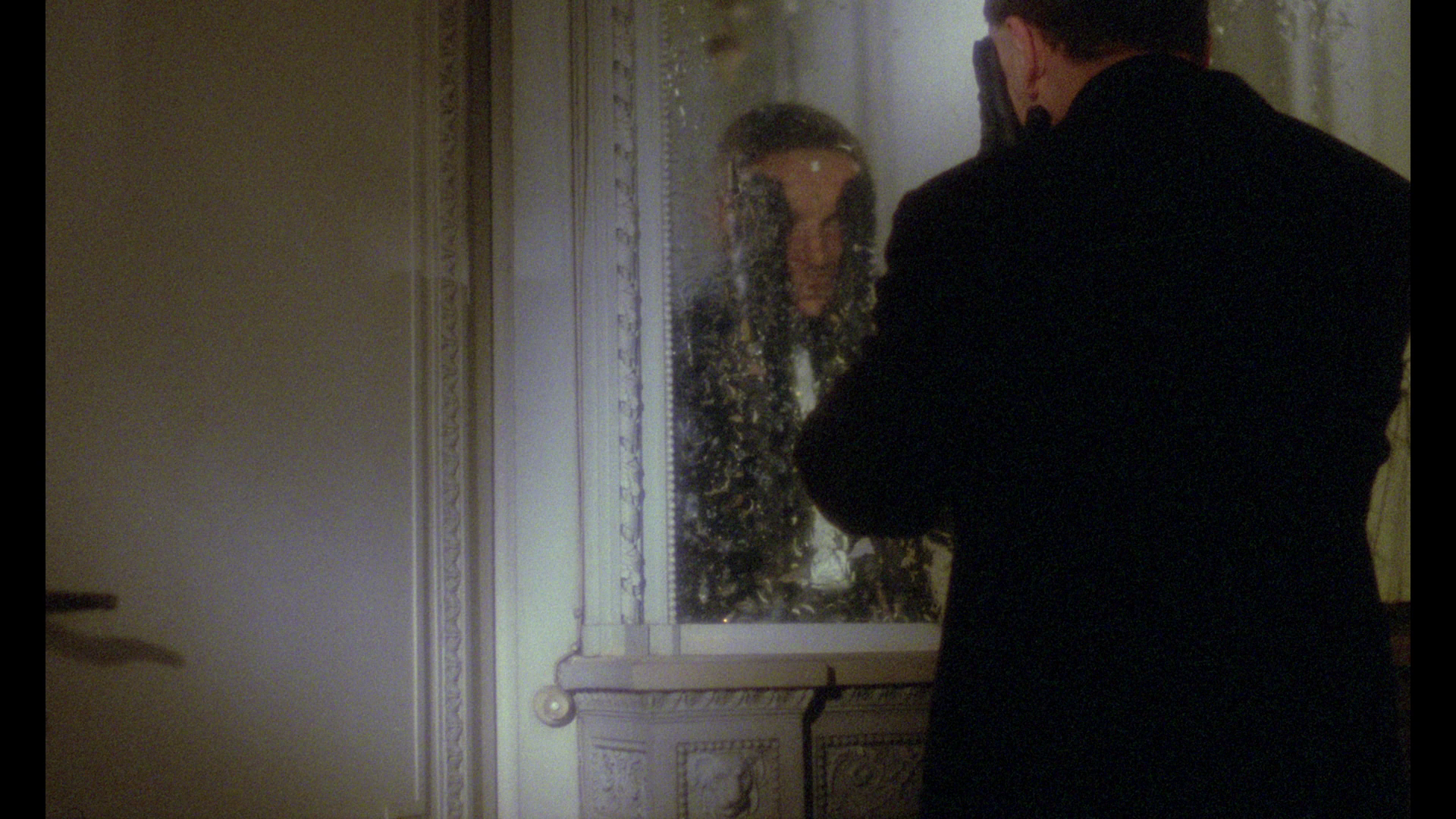  Hyde’s rape of Maw highlights an aspect of Stevenson’s novella that is often overlooked within stage and screen adaptations of the story (especially those that, since the 1887 stage version of the tale, introduced a mate for Jekyll): Jekyll’s writing of his will, leaving his worldly goods to Edward Hyde (the spur of the novella’s mystery narrative), has within the context of the novel’s original publication sometimes been interpreted as leading the reader to assume that Hyde is blackmailing Jekyll over a homosexual love affair. The absence of women in the novella foregrounds this suggestion that Jekyll and Hyde are, or have been, homosexual lovers, and that Jekyll’s insistence on leaving his estate to Hyde is a result of him having fallen prey to the ‘Blackmailers’ Charter’. Hyde’s assault on Maw within Borowczyk’s film ‘is significant as a rare example of Hyde’s violence diverging from the insistent heterosexuality of the film versions’ (Barefoot, op cit.: 248). Hyde is Jekyll’s cultural ‘other’: Mighall points to Lombroso’s definition of the atavistic criminal as ‘one which desire[s] not only to extinguish life in the victim, but to mutilate the corpse, tear its flesh and drink its blood’ (Lombroso, quoted in Mighall, op cit.: xxv). In its depiction of the voracious and brutal pansexuality of Edward Hyde, as an extension of his worshipping of hatred, Borowczyk’s film returns to Stevenson’s narrative its original intention to shock and horrify its audience. Hyde’s rape of Maw highlights an aspect of Stevenson’s novella that is often overlooked within stage and screen adaptations of the story (especially those that, since the 1887 stage version of the tale, introduced a mate for Jekyll): Jekyll’s writing of his will, leaving his worldly goods to Edward Hyde (the spur of the novella’s mystery narrative), has within the context of the novel’s original publication sometimes been interpreted as leading the reader to assume that Hyde is blackmailing Jekyll over a homosexual love affair. The absence of women in the novella foregrounds this suggestion that Jekyll and Hyde are, or have been, homosexual lovers, and that Jekyll’s insistence on leaving his estate to Hyde is a result of him having fallen prey to the ‘Blackmailers’ Charter’. Hyde’s assault on Maw within Borowczyk’s film ‘is significant as a rare example of Hyde’s violence diverging from the insistent heterosexuality of the film versions’ (Barefoot, op cit.: 248). Hyde is Jekyll’s cultural ‘other’: Mighall points to Lombroso’s definition of the atavistic criminal as ‘one which desire[s] not only to extinguish life in the victim, but to mutilate the corpse, tear its flesh and drink its blood’ (Lombroso, quoted in Mighall, op cit.: xxv). In its depiction of the voracious and brutal pansexuality of Edward Hyde, as an extension of his worshipping of hatred, Borowczyk’s film returns to Stevenson’s narrative its original intention to shock and horrify its audience.
Borowczyk depicts the philosophical discussion that takes place over dinner satirically, highlighting the boorishness of the characters – especially General Danvers Carew who, in a moment wonderfully acted by Magee, interrupts a heated debate between Jekyll and Lanyon to assert, ‘Stop making war to each other. Only peace assures progress’. The General, clearly delighted with his own wit, accepts the applause that follows with a proffered chin. The General’s assertion is doubly ironic given his profession as a wamonger and the way in which Borowczyk later highlights the General’s cowardice (when he is attacked by Hyde), his perverse sexuality and his spite (when he spanks his daughter Charlotte after she has taken delight in Hyde’s sexual assault upon her). The dinner sequence is also interrupted by brief cutaways, moments of prolepsis to later sequences depicting acts of violence (accompanied on the soundtrack by musical ‘stings’ within Parmegiani’s score), almost as if the minds of the participants are wandering away from the deathly dull, self-aggrandising debate about Jekyll’s belief in ‘transcendental medicine’: a close-up of Fanny’s face shows her seeming to daydream before a quick cut to the scene at the film’s climax in which Fanny, after having bathed in Jekyll’s compound, stabs her own mother to death. Further cutaways during the dinner sequence, again moments of prolepsis, reveal Hyde’s huge penis rubbing against the buttocks of Charlotte, and a naked corpse being strung up like an animal carcass in a butcher’s shop. The cutaways are symbolic of the profound brutality that lies beneath the thin veneer of civilised society, a common theme of Borowczyk’s work (and are worth considering in terms of Freud’s theories on daydreaming, a major motif within Surrealist art and the discourse that surrounds it). 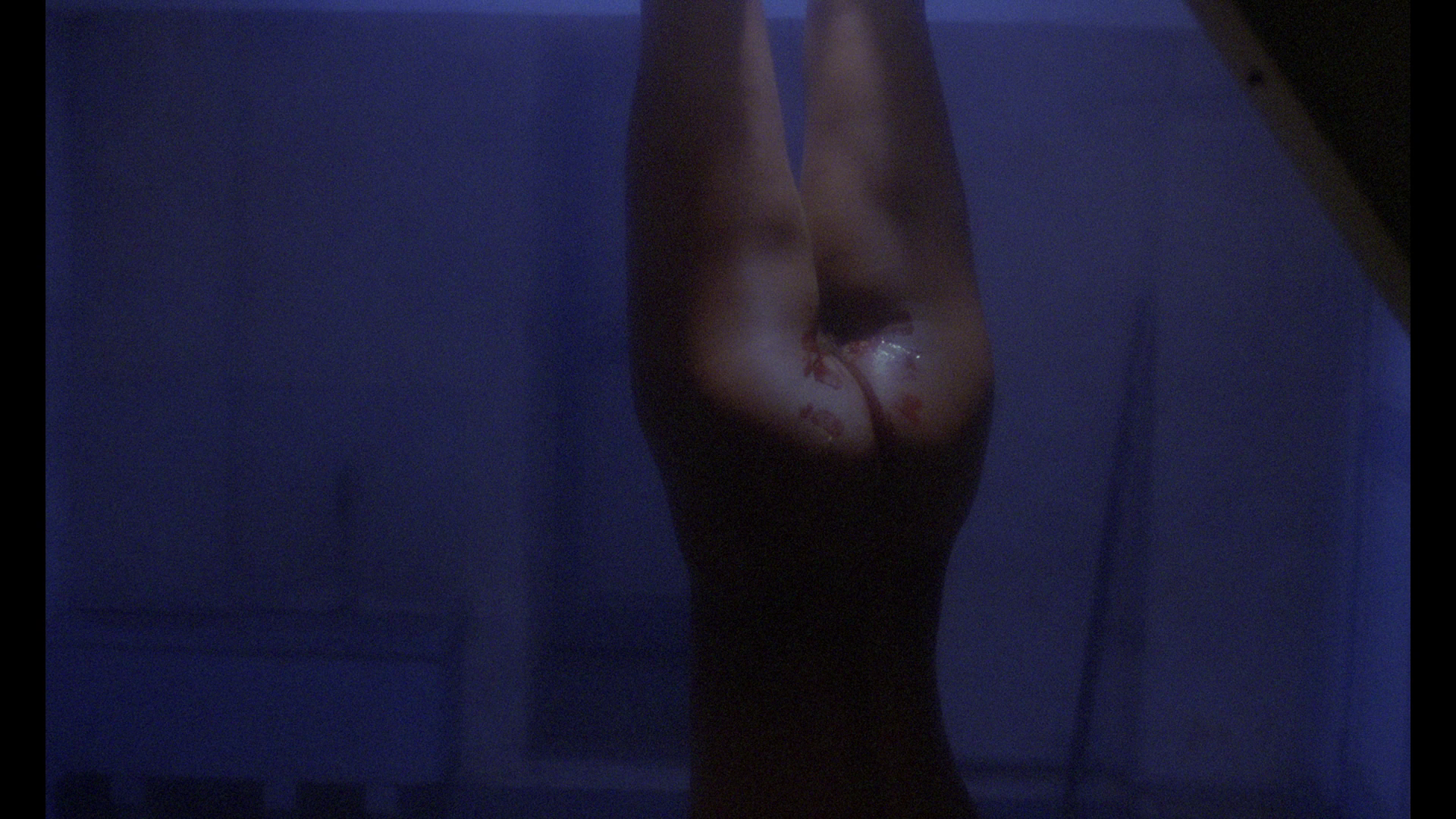
Video
 Gary Barefoot has noted that the history of Borowczyk’s film has been confused by the plethora of titles associated with it, and the various cuts made to different release versions of the film. Before the film was released in Britain, the synopses of the film that were published in the Monthly Film Bulletin and Screen International ‘seem[ed] to describe two different films’ (Barefoot, op cit.: 247). Often presented in a version cut in one way or another (the post-VRA UK VHS releases – from Revolution as The Experiment, from Double Vision Distribution as The Bloodbath of Dr Jekyll, and from Quick Video as The Blood of Dr Jekyll – were all shorn of about two-and-a-half minutes of footage), The Strange Case of Dr Jekyll and Mr Hyde is here given an uncut release with a running time of 91:17 mins. Gary Barefoot has noted that the history of Borowczyk’s film has been confused by the plethora of titles associated with it, and the various cuts made to different release versions of the film. Before the film was released in Britain, the synopses of the film that were published in the Monthly Film Bulletin and Screen International ‘seem[ed] to describe two different films’ (Barefoot, op cit.: 247). Often presented in a version cut in one way or another (the post-VRA UK VHS releases – from Revolution as The Experiment, from Double Vision Distribution as The Bloodbath of Dr Jekyll, and from Quick Video as The Blood of Dr Jekyll – were all shorn of about two-and-a-half minutes of footage), The Strange Case of Dr Jekyll and Mr Hyde is here given an uncut release with a running time of 91:17 mins.
Previously only seen on home video in shonky VHS transfers, which struggle to handle the film’s distinctive use of smoke and diffuse light, the presentation of the film on this disc is a revelation. The film is presented in its original aspect ratio of 1.66:1, and the 1080p presentation (taking up approximately 27Gb of space on a dual-layered Blu-ray disc) uses the AVC codec. The grading was supervised by Noël Véry, the film’s cinematographer, and the transfer is based on a new 2k scan from the film’s negative.  Contrast levels are superb, evidenced from the opening sequence that depicts Hyde’s pursuit of the young girl through alleyways at night-time, bathed in blue light. There’s an amazing level of detail on display, showcasing the film’s fascinating photography. The focal lengths used during the film seem to approximate the field of view associated with the human eye, which suggests that the bulk of the film (or perhaps all of it) was shot with a 50mm lens. (In the contextual material contained within Arrow’s Blu-ray release of Borowczyk’s The Beast, Noël Véry asserted that Borowczyk preferred the 50mm focal length because with it, ‘there was no deformation’ of the image.) There’s none of the flattening of perspective that one sees with telephoto lenses, or the unnatural field of vision associated with wide-angle lenses. This ‘standard’ focal length results in compositions within the, presumably constricted, interiors of the house used during the film’s production appearing tight and claustrophobic (as compared with wide-angle lenses, which would have made these spaces seem larger). An outcome of this is the tightly-composed medium shots of characters, absent of depictions of ceilings or floors, that – as is suggested in the video essay ‘Phantasmagoria of the Interior’ (see the ‘Extras’ section of this review) – finds its corollary in the composition of the Vermeer painting that the Osbournes present to the Jekylls. Sometimes the use of this focal length facilitates shots that are framed through doorways, reinforcing a sense of entrapment by depicting characters appearing trapped within these frames-within-the-frame, or suggesting secret and/or nefarious goings-on within the spaces beyond these doorways. At other times, scenes such as the dinner celebrating Henry and Fanny’s engagement are shot almost as if the camera is eavesdropping on the action, our point of view on these events framed through doorways and other portals. Contrast levels are superb, evidenced from the opening sequence that depicts Hyde’s pursuit of the young girl through alleyways at night-time, bathed in blue light. There’s an amazing level of detail on display, showcasing the film’s fascinating photography. The focal lengths used during the film seem to approximate the field of view associated with the human eye, which suggests that the bulk of the film (or perhaps all of it) was shot with a 50mm lens. (In the contextual material contained within Arrow’s Blu-ray release of Borowczyk’s The Beast, Noël Véry asserted that Borowczyk preferred the 50mm focal length because with it, ‘there was no deformation’ of the image.) There’s none of the flattening of perspective that one sees with telephoto lenses, or the unnatural field of vision associated with wide-angle lenses. This ‘standard’ focal length results in compositions within the, presumably constricted, interiors of the house used during the film’s production appearing tight and claustrophobic (as compared with wide-angle lenses, which would have made these spaces seem larger). An outcome of this is the tightly-composed medium shots of characters, absent of depictions of ceilings or floors, that – as is suggested in the video essay ‘Phantasmagoria of the Interior’ (see the ‘Extras’ section of this review) – finds its corollary in the composition of the Vermeer painting that the Osbournes present to the Jekylls. Sometimes the use of this focal length facilitates shots that are framed through doorways, reinforcing a sense of entrapment by depicting characters appearing trapped within these frames-within-the-frame, or suggesting secret and/or nefarious goings-on within the spaces beyond these doorways. At other times, scenes such as the dinner celebrating Henry and Fanny’s engagement are shot almost as if the camera is eavesdropping on the action, our point of view on these events framed through doorways and other portals.
The film juxtaposes earthy tones (the browns of the décor and furnishings within the house) with vivid primary colours (the red of the General’s tunic and the unnaturally blue light that bathes the night-time exteriors, giving them the quality of a nightmare). Diffuse light dominates many sequences, apparently created by the use of smoke on set, giving an intended ‘softness’ to a number of shots (notably the close-ups of Pierro). The Blu-ray presentation handles all of this very well, capturing the film’s unusual and curious ‘texture’ within a very strong encode that resolves all of this visual information superbly, and contains a natural, organic level of film grain. NB. Some larger screen grabs are included at the bottom of this review.
Audio
The viewer is presented with the choice of watching the film with its English dub or via the French-language version (both in LPCM 1.0 mono). Optional English ‘dubtitles’ (for the Hard of Hearing) are included for the English audio track, and a separate set of English subtitles that translate the French dialogue are included too. Both tracks are clean and audible but, as both versions are essentially ‘dubs’ (owing to the film’s international cast and crew), drift out of sync slightly here and there, in line with the original production techniques. The French track loses Magee’s distinctive voice (and interestingly, Magee pronounces the name ‘Jekyll’ in the manner in which Stevenson would have, as ‘Jee-kill’, rather than the now-more familiar ‘Jeh-kill’) but also, more positively, loses the unconvincing dubbing of the majority of the other characters – many of whom are, in the English dub, given jarring American accents. On the whole, the French dub is arguably superior and possibly the best option for first-time viewers; but the inclusion of the English dub is something to be thankful for, and it’s worth watching the film with both simply for the sake of comparison.
Extras
The disc includes a wealth of superb contextual material.  An audio commentary is included which is introduced and ‘moderated’ by Daniel Bird, featuring archival interviews collected over a number of years with Borowczyk himself, cinematographer Noël Véry, editor Khadicha Bariha, assistant Michael Levy and filmmaker Noel Simsolo. It’s a superb, densely-packed commentary. Optional subtitles are provided for the comments not in English. An audio commentary is included which is introduced and ‘moderated’ by Daniel Bird, featuring archival interviews collected over a number of years with Borowczyk himself, cinematographer Noël Véry, editor Khadicha Bariha, assistant Michael Levy and filmmaker Noel Simsolo. It’s a superb, densely-packed commentary. Optional subtitles are provided for the comments not in English.
Two short films: - ‘Happy Toy’ (Borowczyk, 1979) (2:17). This animated short, made by Borowczyk in 1979, has been little seen since its production – to the extent that, as the text on the disc asserts, until 2014 it was missing from most listings of Borowczyk’s work. The animation style is based on Charles-Émile Reynaud’s 1877 Praxinoscope, an adaptation of the Zoetrope, and features a series of different scenarios, all focused on the theme of childhood: children skipping, playing hopscotch, holding hoops through which dogs jump, feeding ducks, etc. - ‘Himorogi’ (Marina and Alessio Pierro, 2012) (16:57). This short film, the title of which refers to ‘a sacred space or altar’, was inspired by Borowczyk’s technique and contains a number of allusions to his work. It’s a fascinating, quite unsettling little film which combines monochrome photography, stop-motion animation and, towards the end, some colour footage, and images of Marina Pierro from Borowczyk’s films. The film begins with the camera’s exploration of an abandoned building and ends with a depiction of a quasi-cabbalistic/alchemistical ritual that uses objects from within a number of Borowczyk’s films – objects which Borowczyk himself fetishised with the camera. Interviews: - Udo Kier (11:18). In this interview, conducted in English, Kier discusses his first meeting with Borowczyk as the director was planning a film about the notorious Fifteenth Century occultist and child murderer Gilles de Rais. The film, which was never produced, would have focused on the trial of de Rais. Kier also talks about his work on Borowczyk’s film Lulu (1980), in which Kier played Jack the Ripper. Lulu led on to Dr Jekyll et les femmes, the production of which forms the central focus of the interview with Kier. Kier tells us that Jekyll was shot in Paris, and originally Kier was to play both Henry Jekyll and Edward Hyde, until Borowczyk decided to cast another actor (Zalcberg) as Hyde. Kier talks about Borowczyk’s attention to detail in terms of mise-en-scčne; he suggests that the director ‘was very precise’ in the casting of this film but then, when the ‘right’ actors where in place, didn’t feel the need to direct the actors too heavily in terms of their performances. An example of Borowczyk’s precision in terms of the mise-en-scčne, Kier suggests, was the bathroom set in which the transformations take place, which was carefully decorated by Borowczyk with small objects. (Kier also reveals that he struggled to remove the red contact lenses that were used during his character’s transformation into Edward Hyde and had to be taken to the hospital to have them extracted.) On of the strengths of Borowczyk’s films, Kier argues, is their atmosphere; and in this sense, Kier suggests that Borowczyk ‘was more like a painter. He lived in his own world’. - Marina Pierro (20:16). This interview with Marina Pierro, often cited as the ‘muse’ of Borowczyk during his later films, is conducted in Italian with optional English subtitles. Pierro doesn’t appear on screen; instead, the audio interview is accompanied by still photographs and imagery from the film (and other Borowczyk pictures mentioned by Pierro).  Pierro discusses how she came to work with Borowczyk and declares that she ‘had a strong interest in Surrealism’ and, in particular, Bunuel. In her first meeting with Borowczyk, she says, the pair discussed art and the conversation focused largely on light within the paintings of Vermeer and Turner. Pierro discusses how she came to work with Borowczyk and declares that she ‘had a strong interest in Surrealism’ and, in particular, Bunuel. In her first meeting with Borowczyk, she says, the pair discussed art and the conversation focused largely on light within the paintings of Vermeer and Turner.
Pierro says Borowczyk was ‘non-conformist’ in nature and discusses the production of the films on which she collaborated with the director, beginning with Interno di un convento (Behind Convent Walls, 1978). She discusses Borowczyk’s idea for a film about Nefertiti, which was to star Pierro, but which was never shot. She also talks about Borowczyk’s idea for Jekyll, which involved creating a number of female characters not present in Robert-Louis Stevenson’s source novella, including the use of the name of Stevenson’s wife, Fanny Osbourne, for Pierro’s character. Pierro suggests that this careful construction of the film around the character of Fanny Osbourne, and her importance for the narrative, played a large part in Borowczyk’s anger at the retitling of the film as Dr Jekyll et les femmes. Kier’s Jekyll, Pierro argues, is ‘determined and fragile; rigid but outside the box’. Pierro also discusses working with Patrick Magee, who was, she says, ‘a very inward person’. Borowczyk’s relationship with his producers is examined, and Pierro argues that producers often took advantage of Borowczyk’s ability to work quickly and cheaply. Pierro talks about ‘Himorogi’, the short film homage to Borowczyk that is also included on this disc. She suggests that the film was devised like a haiku, and she talks about the use of Parmegiani’s music and the visual references to Borowczyk’s films. Borowczyk’s career, Pierro argues, ‘doesn’t need any “re-evaluation”’: the films were reviewed ‘in their esssence’ and evidenced Borowczyk’s ability to communicate with ‘the artists, intellectuals and the wider audience’. Pierro pooh-poohs the discourse of the ‘specialised press, cinephiles’ and critics, which she argues is stunted in its comprehension of the language of cinema and, especially, its cognisance of the cultural significance of a film text. The concept of ‘rescuing’ Borowczyk’s reputation is repudiated by Pierro: ‘The words “reputation”, “success”, these words are toys for people who don’t have material for their creativity’, she argues, before going on to quote Pasolini’s assertion that ‘Success is the flipside of persecution’. - Alessio Pierro on ‘Himorogi’ (10:36). This interview with Alessio Pierro is conducted in Italian, with optional English subtitles. Speaking on camera, Pierro talks about the meaning of the title, ‘Himorogi’, as a reference to ‘a sacred space or altar’ and focuses to a greater extent on the use of objects within the film and the significance of these objects for Borowczyk’s cinema. - Sarah Mallinson (10:00). The final interview on this disc is with Sarah Mallinson, the production assistant on ‘Happy Toy’. Mallinson talks at length about her work with the animator Peter Foldes and her first encounter with Borowczyk at the Annecy Animation Festival, before reflecting on the relationships between Foldes and Borowczyk’s animation styles. Documentaries and (video) essays: - Appreciation by Michael Brooke (32:56). In this piece, interspersed with clips from the film and still images, Michael Brooke reflects on his first viewing of this film, his first exposure to Borowczyk, under the title The Blood of Dr Jekyll. Brooke talks about the picture’s ‘appropriately culty Euro-cast’ and its relationship with European horror films of the 1970s and early 1980s. The film, Brooke argues, has ‘a uniquely individual look’ which is partly constructed around Borowczyk’s fascination with, and focus on, objects. Brooke compares Jekyll with Bunuel’s L’Age d’Or (1930) and Bunuel’s assertion that Un Chien Andalou (1929) was ‘a desperate and dispassionate call to murder’. Brooke discusses the trajectory of Borowczyk’s career before talking about the film’s production and casting, especially the performances of Magee, Kier and Pierro. The retitling of the film, and its tumultuous life on home video formats, is also examined. - ‘Phantasmagoria of the Interior’ (14:39). This piece, a combination of onscreen text and carefully-edited clips from the film, focuses on the Vermeer painting that the Osbournes present as the ‘dowry’ for Fanny’s impending marriage to Henry Jekyll, using the painting as a locus for its examination of Borowczyk’s focus on space and notions of femininity. Vermeer’s wife was repeatedly during her pregnancy by her psychotic brother Wilhelm, who used a spiked stick to assault his sister, a fact which finds its echo in the film’s many sequences in which Hyde assaults his victims. We are shown how the compositional elements of Vermeer’s painting find their corollary in Borowczyk’s compositions within the film. A visual theme of entrapment, it is suggested, is present within the ways in which women are captured by shallow depth of field whereas the male characters are movement from foreground to background and vice versa. Also commented on is the film’s suggestion of the necessity of ‘overthrowing’ mothers and fathers. - ‘Eyes that Listen’ (10:01). This piece, constructed through a combination of a 2008 interview with Parmegiani, onscreen text and clips from the film, examines the use of Parmegiani’s music within Jekyll. - ‘Return to Méličs’ (6:50). The final video essay, again constructed through a combination of text and clips from Jekyll, focuses on Borowczyk’s adoption of techniques from Méličs’ films. The film’s trailer (1:41). This is the French trailer for the film, comprised of still images from the film, but the soundtrack elements have been lost. Consequently, here it’s presented with three audio options: Parmegiani’s music, the voiceover used for the English-language trailer, and a commentary by editor Khadicha Bariha.
Packaging
On a second disc is a DVD copy of the contents of the Blu-ray. These two discs are housed in an Amaray case. The sleeve contains reversible artwork: on the flipside is the same poster but with the film's original French title, 'Dr Jekyll et les femmes'. Also included in the packaging is a handsomely illustrated booklet of Arrow's now-trademark quality, with new writing on the film by Daniel Bird and some archival content.
Overall
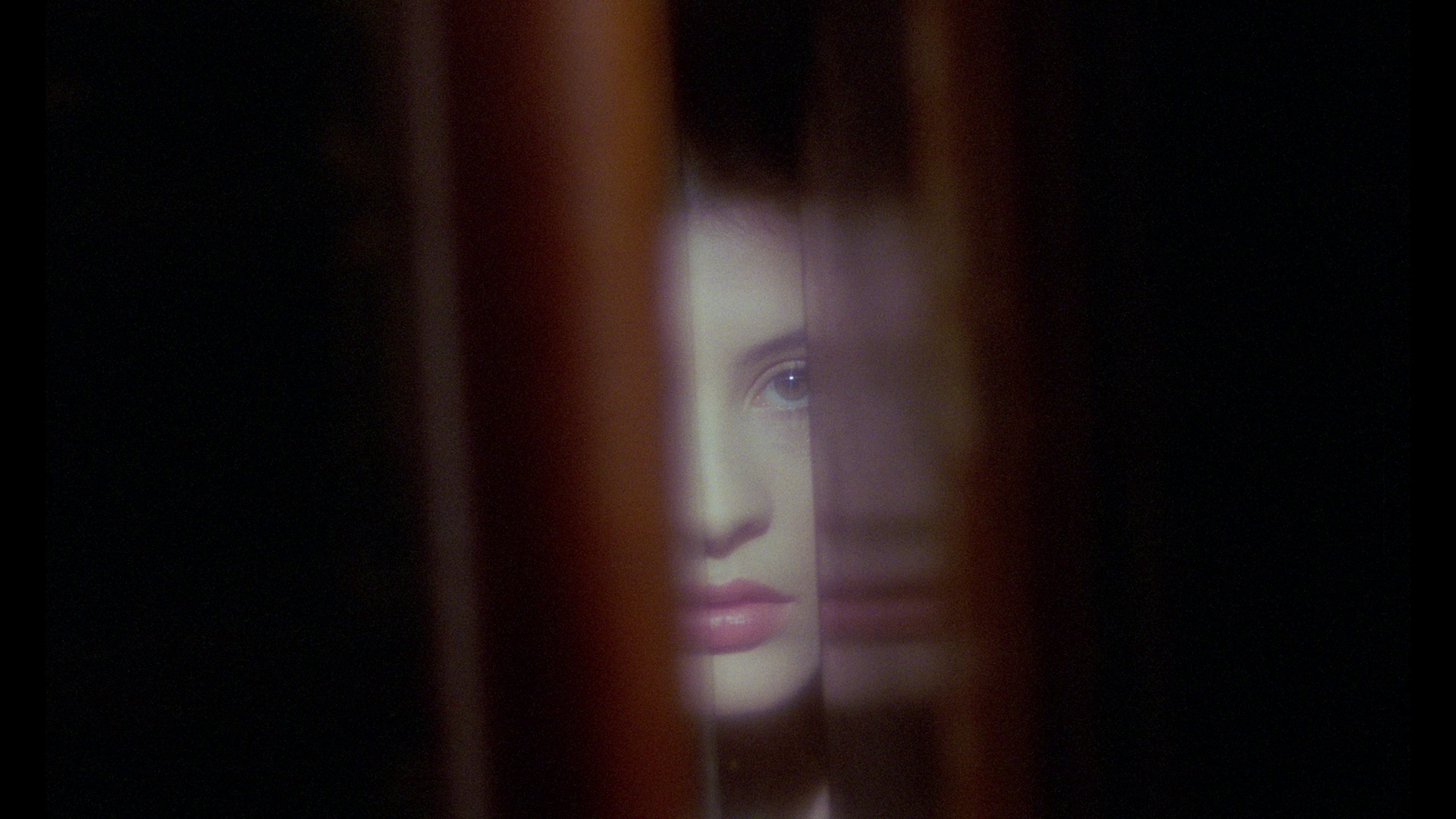 Borowczyk’s film returns to Stevenson’s narrative its original intention to shock and horrify its audience, and it is testament to Borowczyk’s technique that The Strange Case of Dr Jekyll and Miss Osbourne is still a deeply shocking and subversive film. This has long been one of my favourite films, and Arrow’s release is a dream come true, giving a film that has rarely been screened in cinemas, and has only been seen in a home video context in poorly-presented and often cut VHS versions, a first-class Blu-ray presentation. The presentation of the main feature is superb, capturing the ‘difficult’ nuances of Noël Véry’s photography (the juxtaposition of earthy colours with primary colours; the diffuse light generated by the use of smoke on the film’s sets) in a manner that is faithful to the original and which makes the experience of watching the film, for an audience familiar with the picture from its VHS incarnations, like viewing it anew. This superb presentation of the film, which thankfully includes both the English and French dubs, is accompanied by a first-class range of contextual material, with interviews and a commentary (compiled from archive interviews with Borowczyk and his collaborators) that are particularly illuminating. As with Arrow’s Blu-ray releases of some of Borowczyk’s earlier films (in their ‘Boro Box’, last year), it’s hard to imagine this release not appearing on lists of the best Blu-rays of 2015. Borowczyk’s film returns to Stevenson’s narrative its original intention to shock and horrify its audience, and it is testament to Borowczyk’s technique that The Strange Case of Dr Jekyll and Miss Osbourne is still a deeply shocking and subversive film. This has long been one of my favourite films, and Arrow’s release is a dream come true, giving a film that has rarely been screened in cinemas, and has only been seen in a home video context in poorly-presented and often cut VHS versions, a first-class Blu-ray presentation. The presentation of the main feature is superb, capturing the ‘difficult’ nuances of Noël Véry’s photography (the juxtaposition of earthy colours with primary colours; the diffuse light generated by the use of smoke on the film’s sets) in a manner that is faithful to the original and which makes the experience of watching the film, for an audience familiar with the picture from its VHS incarnations, like viewing it anew. This superb presentation of the film, which thankfully includes both the English and French dubs, is accompanied by a first-class range of contextual material, with interviews and a commentary (compiled from archive interviews with Borowczyk and his collaborators) that are particularly illuminating. As with Arrow’s Blu-ray releases of some of Borowczyk’s earlier films (in their ‘Boro Box’, last year), it’s hard to imagine this release not appearing on lists of the best Blu-rays of 2015.
References: Barefoot, Gary, 2009: ‘Lost and Found in Translation and Adaptation: Walerian Borowczyk and Docteur Jekyll et les Femmes (1981)’. In: Ambrosini, Richard & Dury, Richard (eds), 2009: European Stevenson. Newcastle: Cambridge Scholars Publishing: 241-52 Mighall, Robert, 2002: ‘Introduction’. In: Stevenson, Robert Louis, 2002: The Strange Case of Dr Jekyll and Mr Hyde and Other Tales of Terror. London: Penguin: ix-xxxix Thomson, David, 1992: ‘Pleasures of the Flesh: Walerian Borowczyk’. In: Atkinson, Michael (ed), 1992: Exile Cinema: Filmmakers at Work Beyond Hollywood. State University of New York Press: 163-9 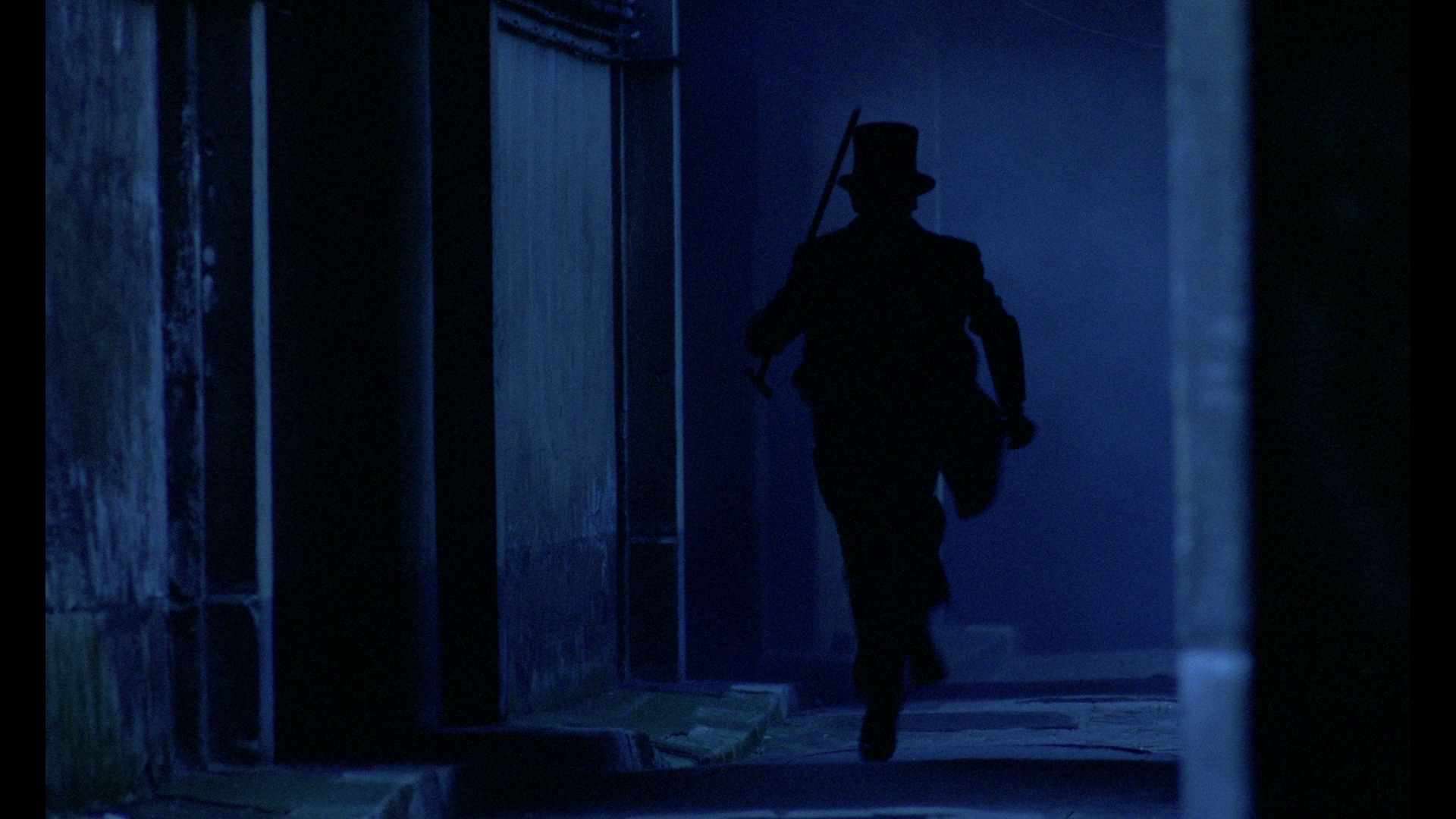
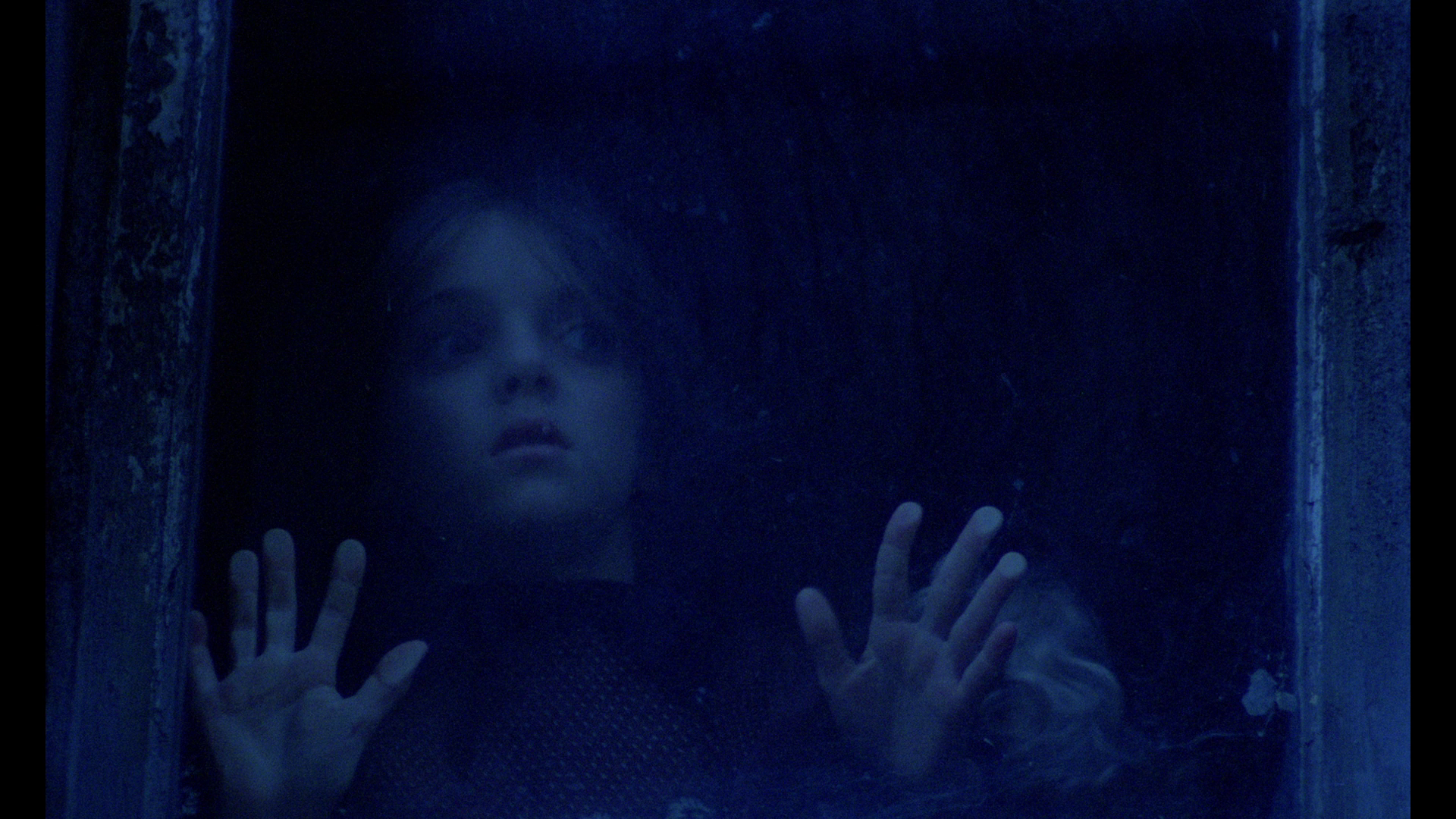
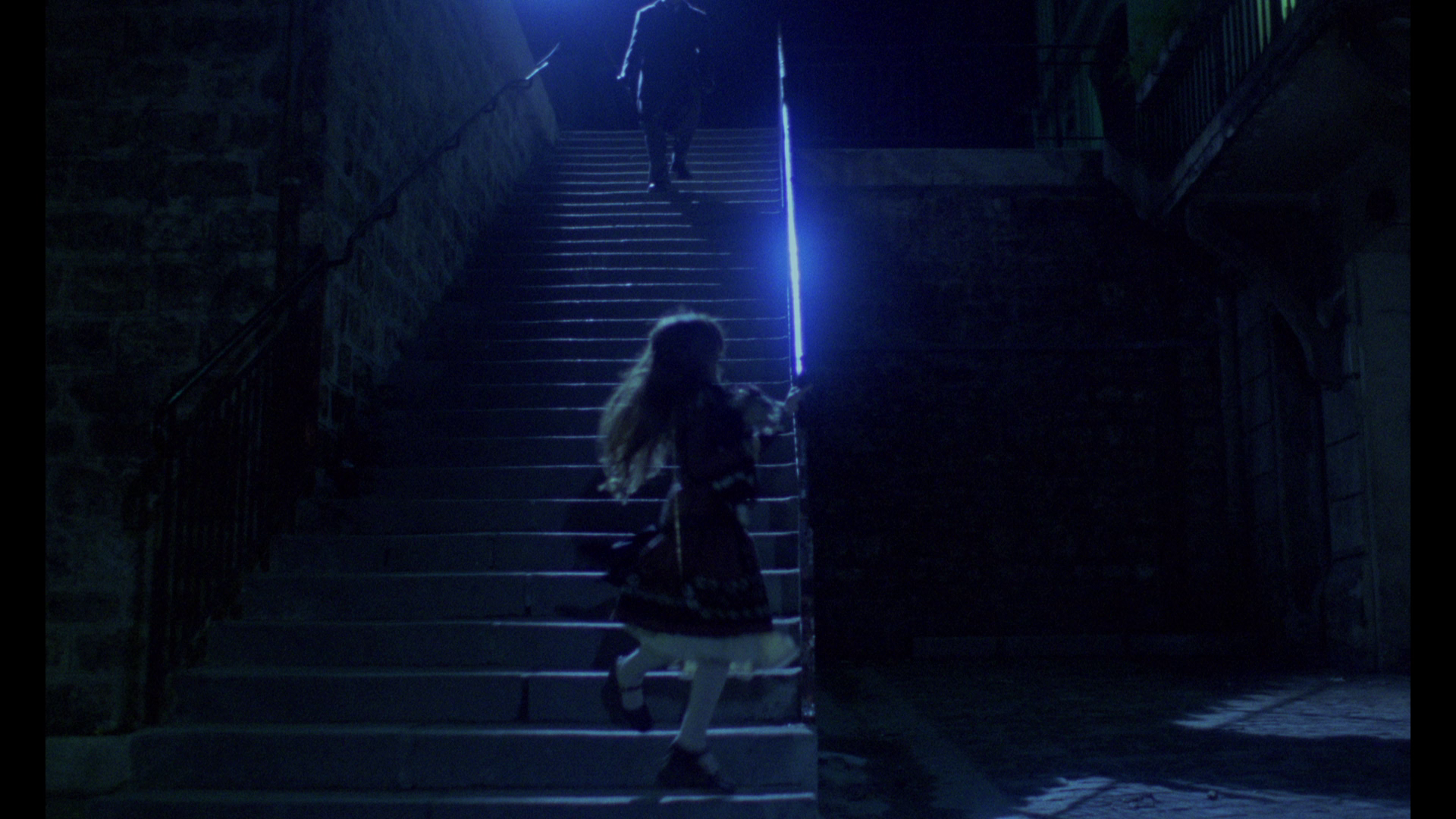
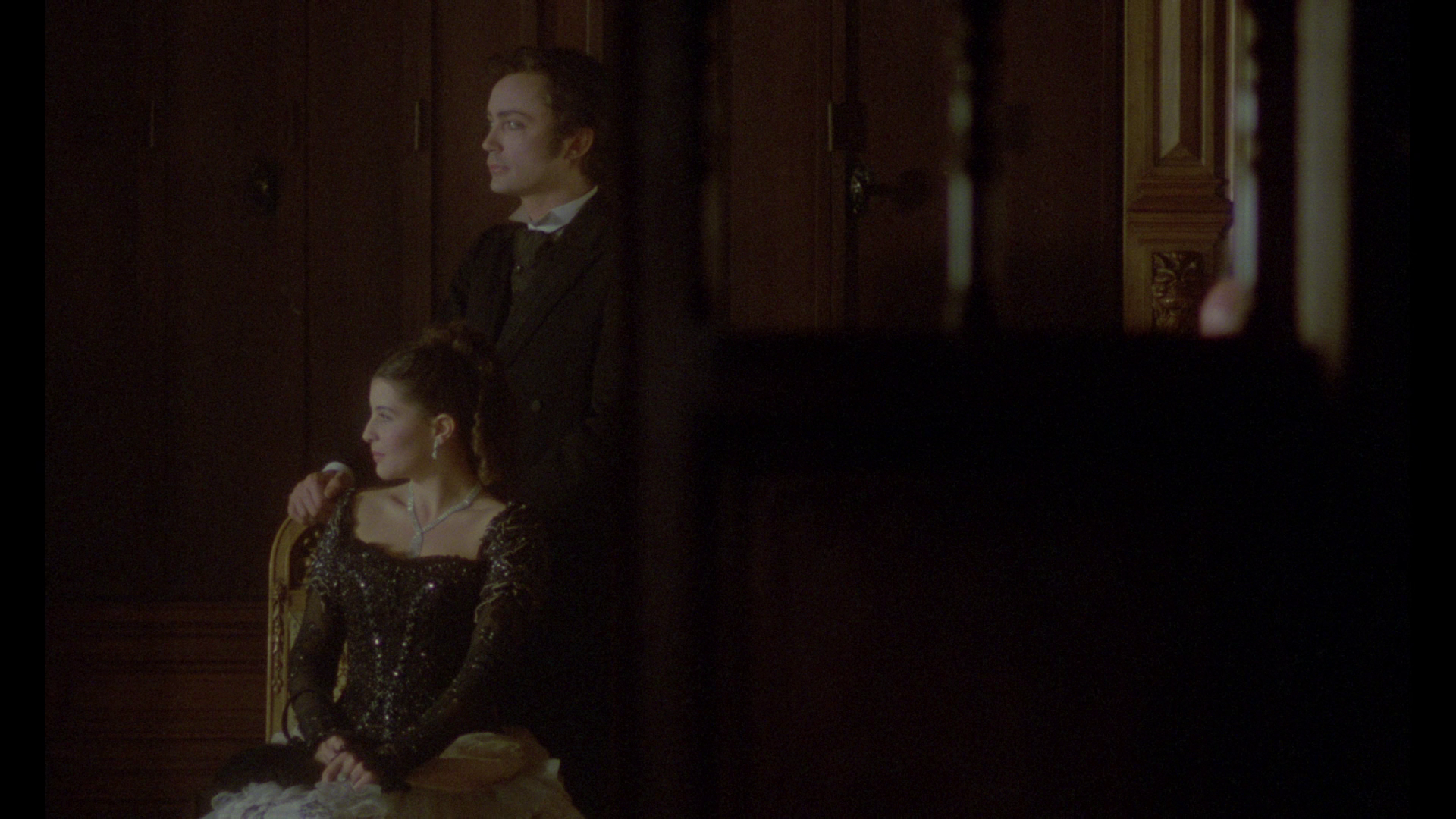
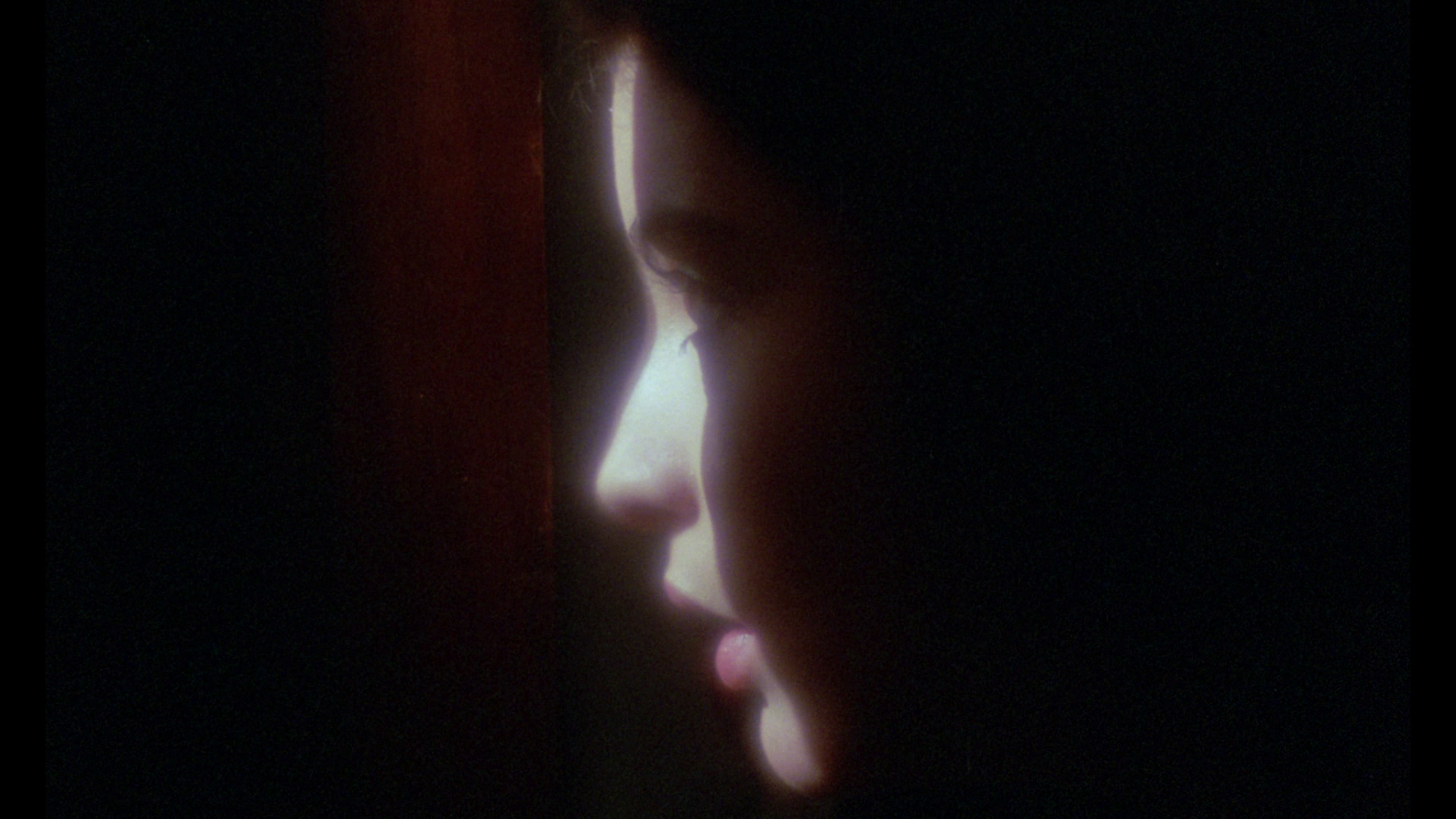
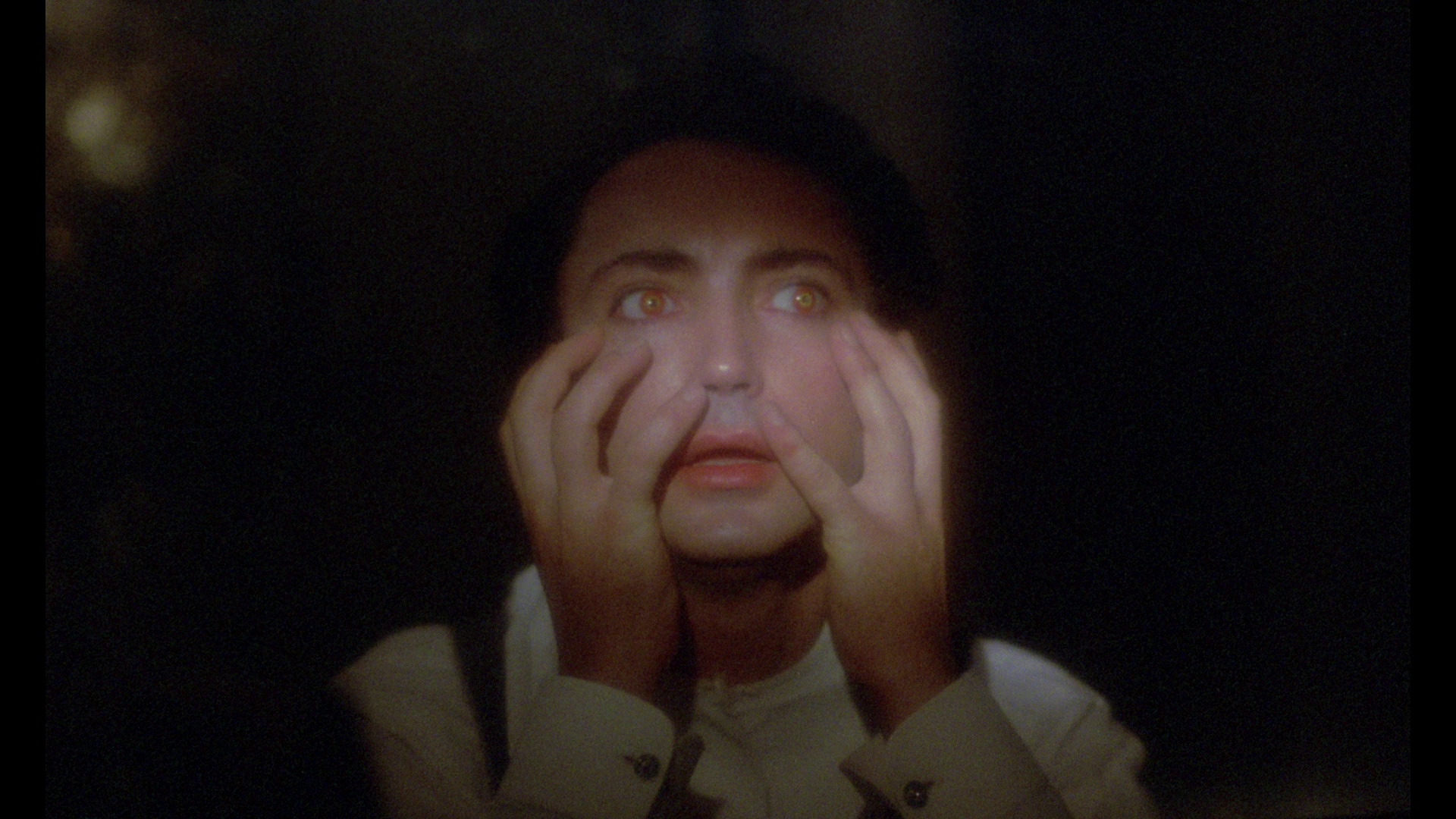
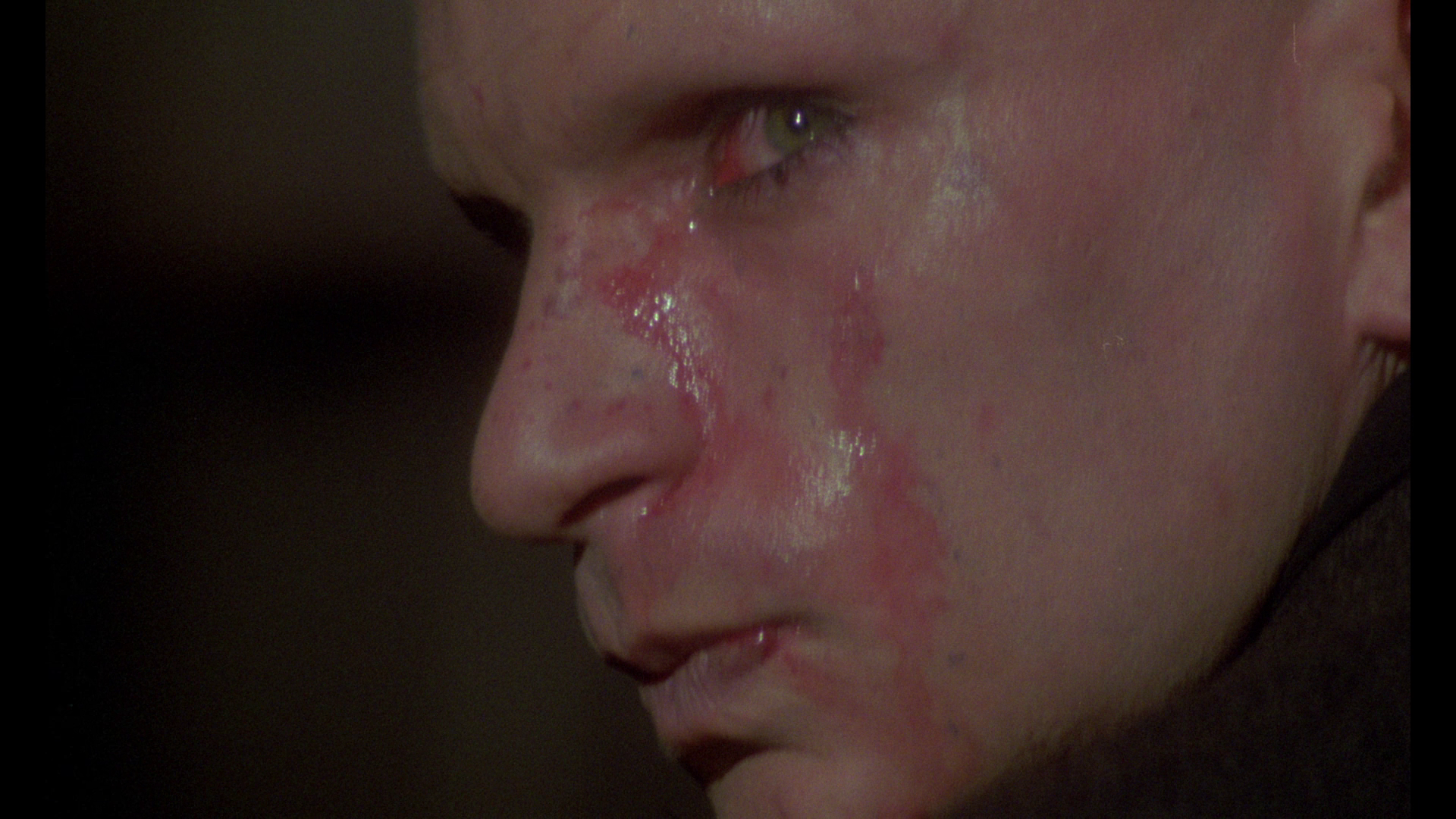
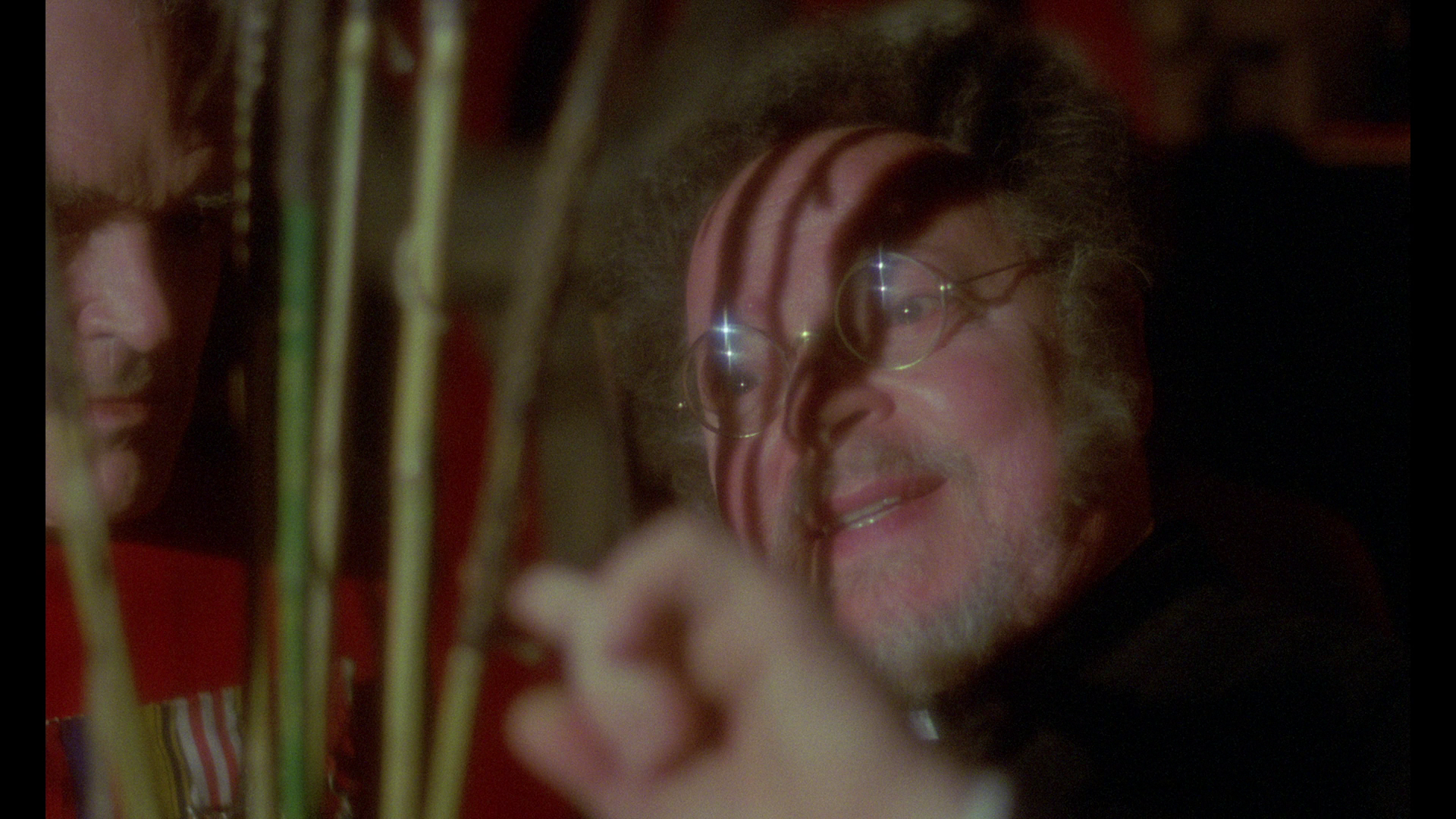
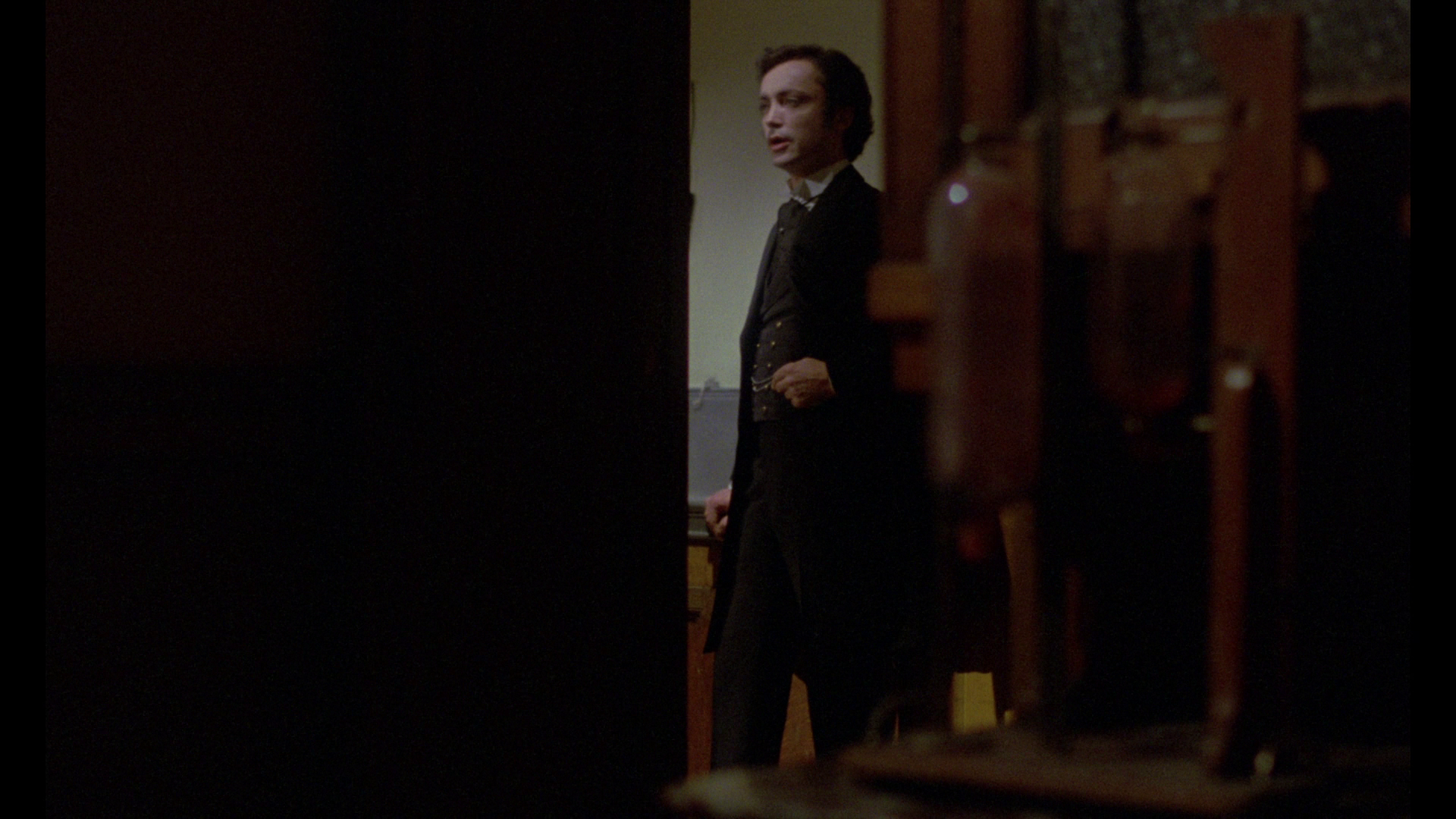
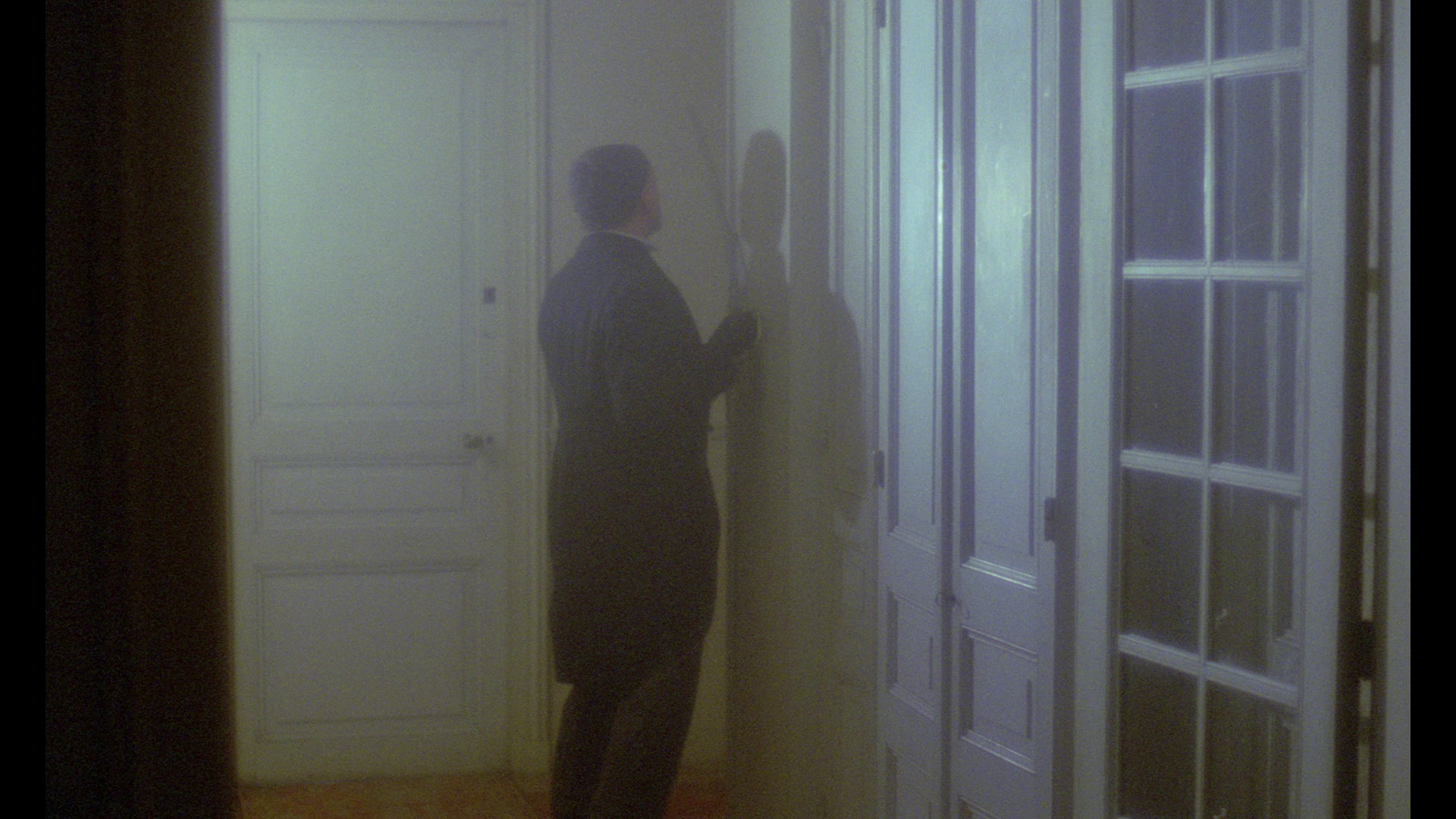
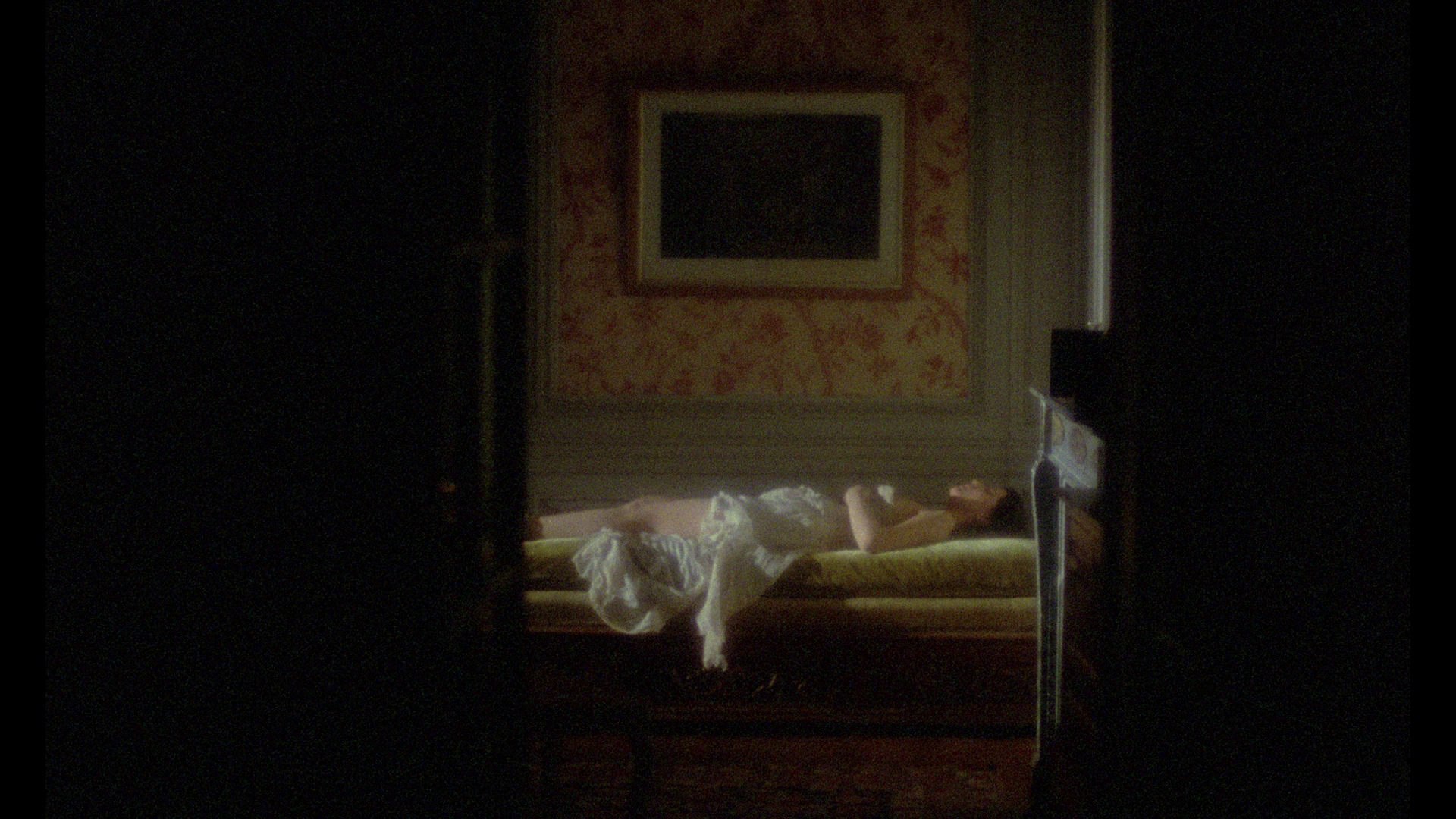
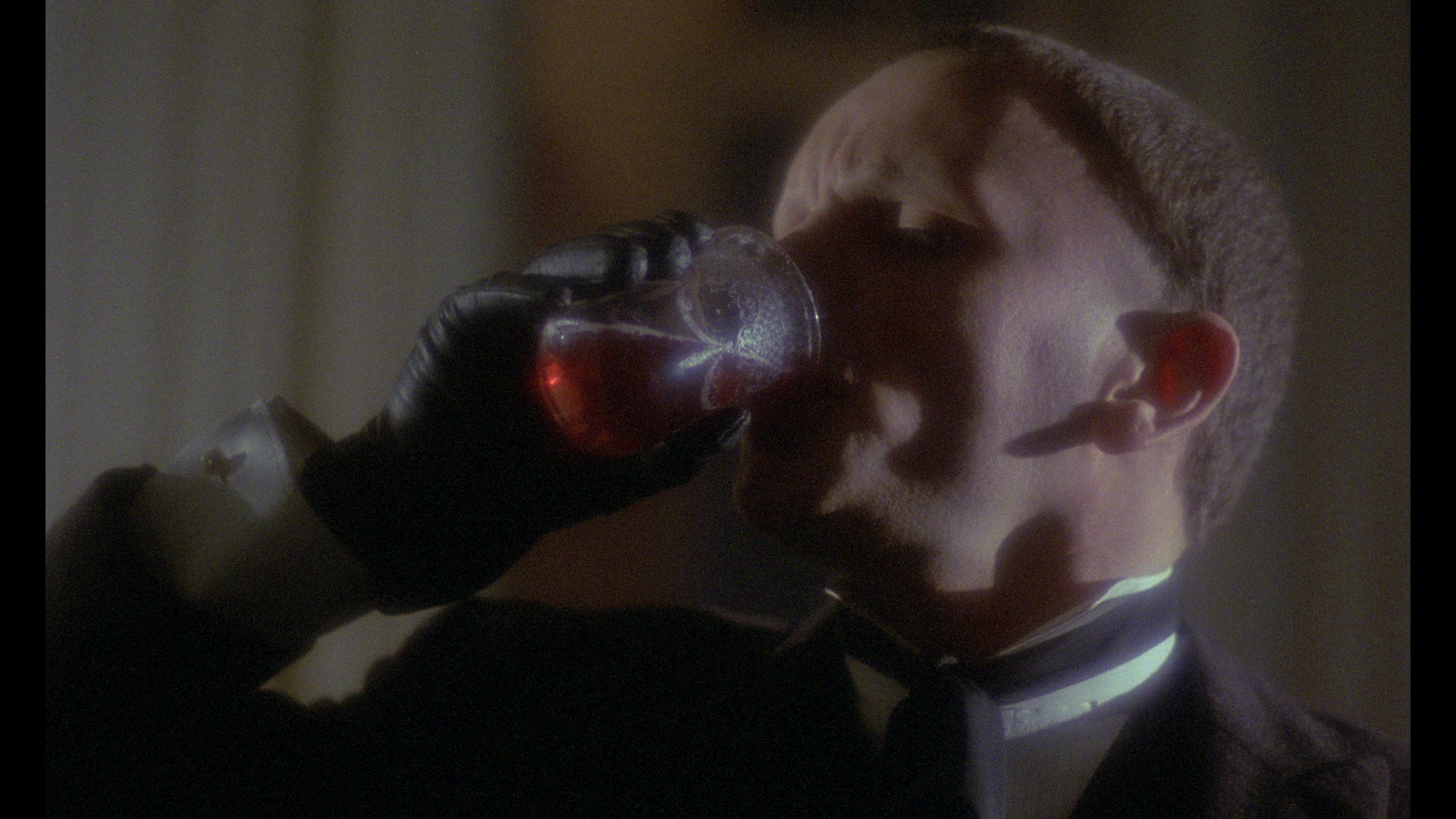
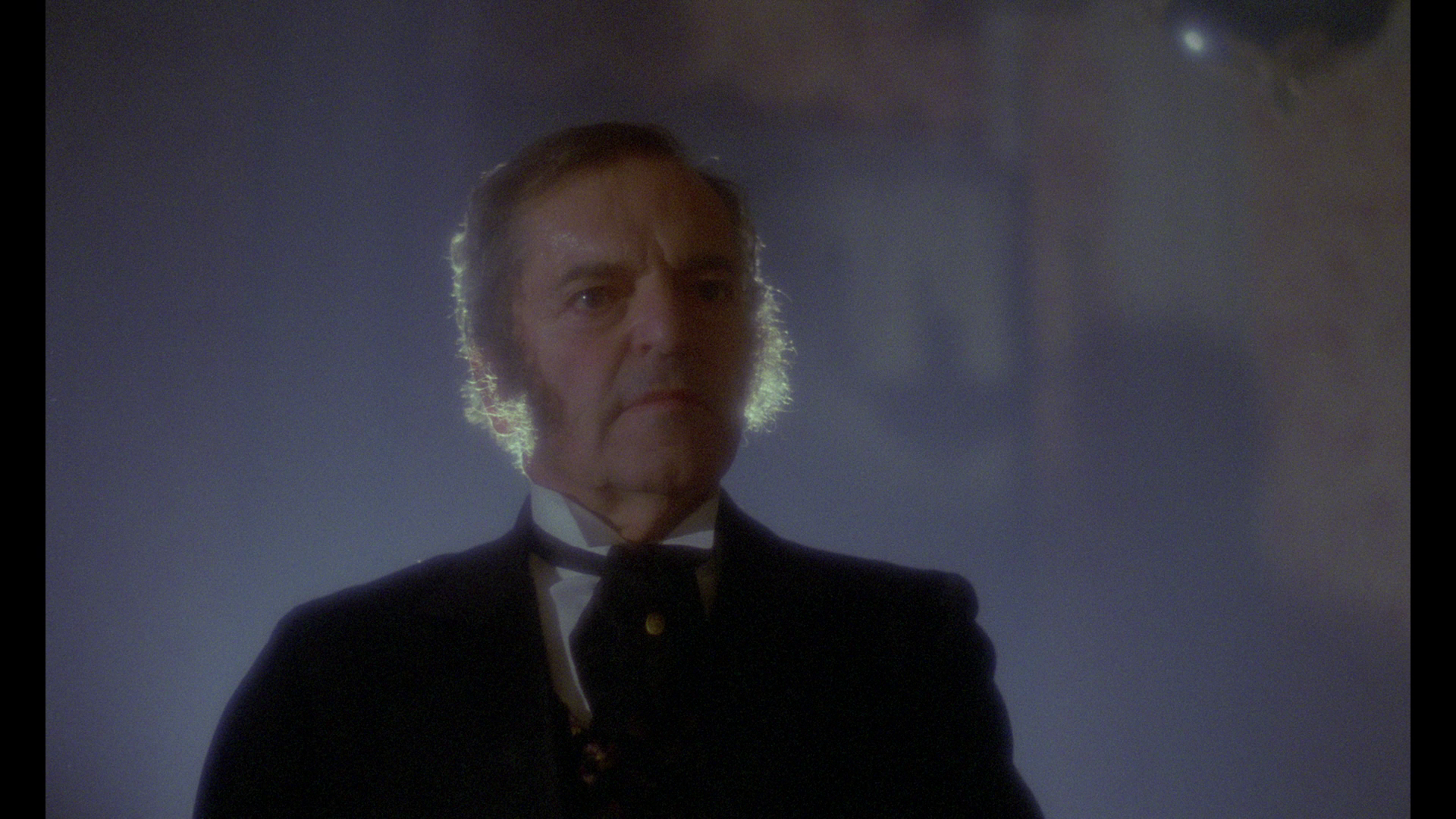
|
|||||

|